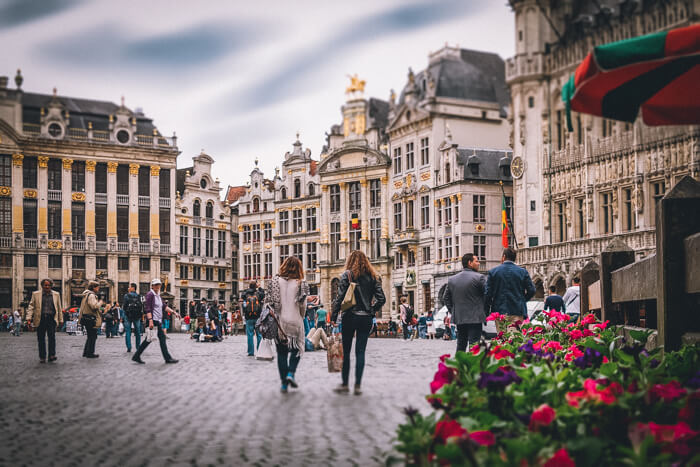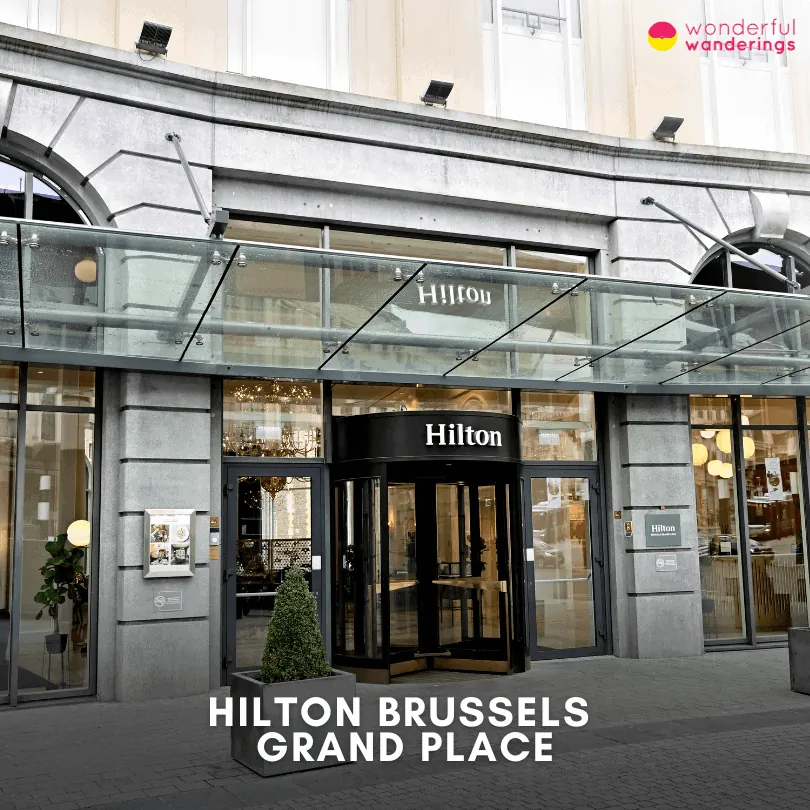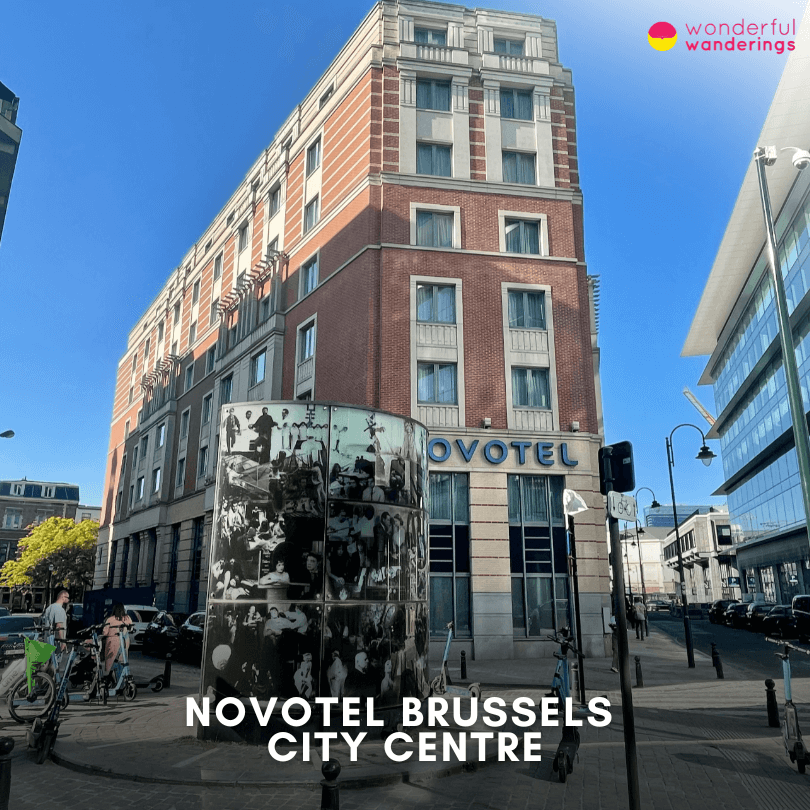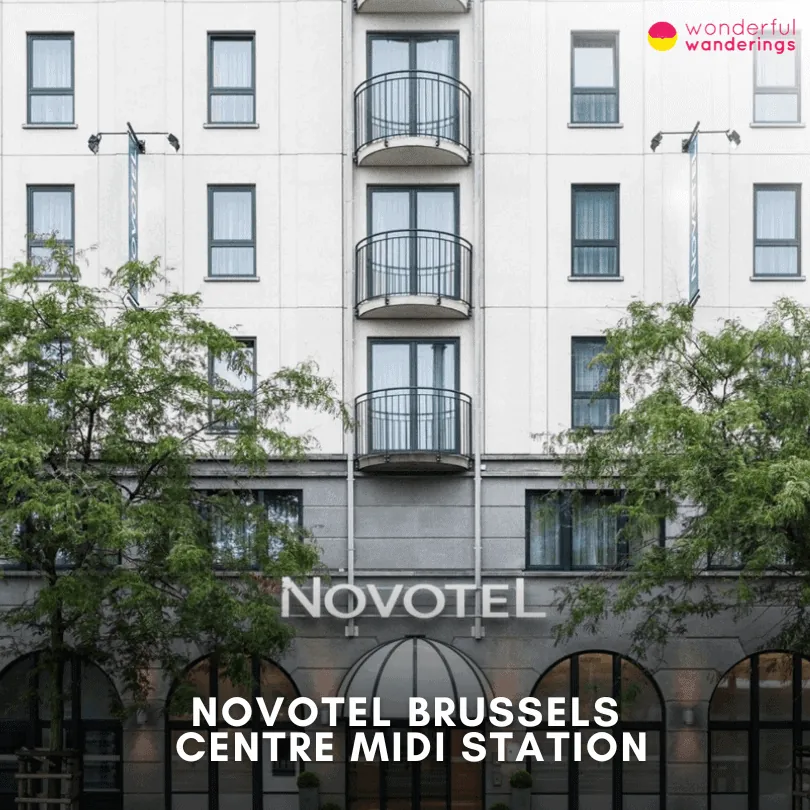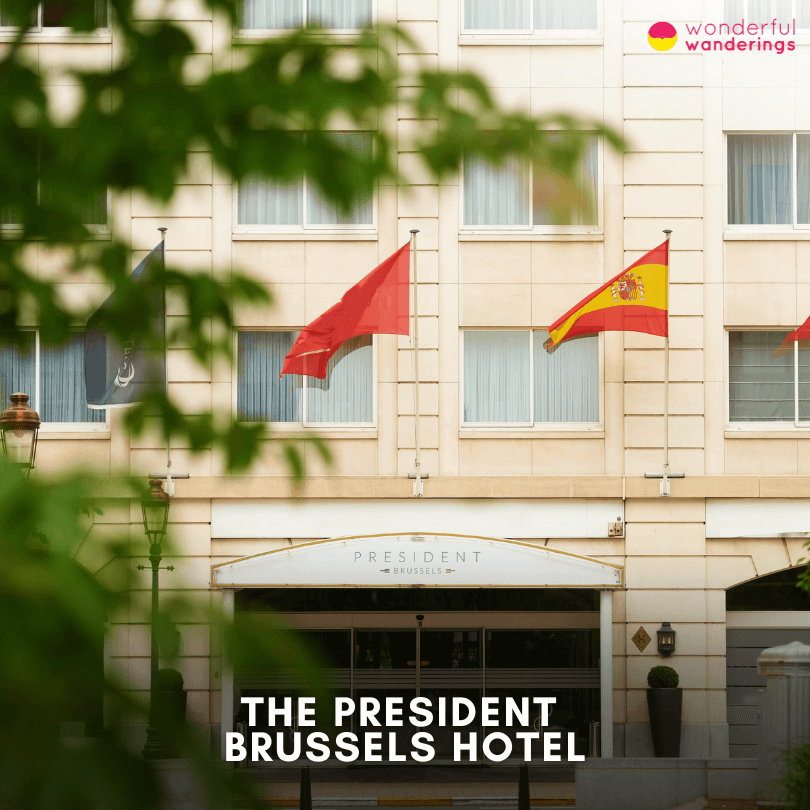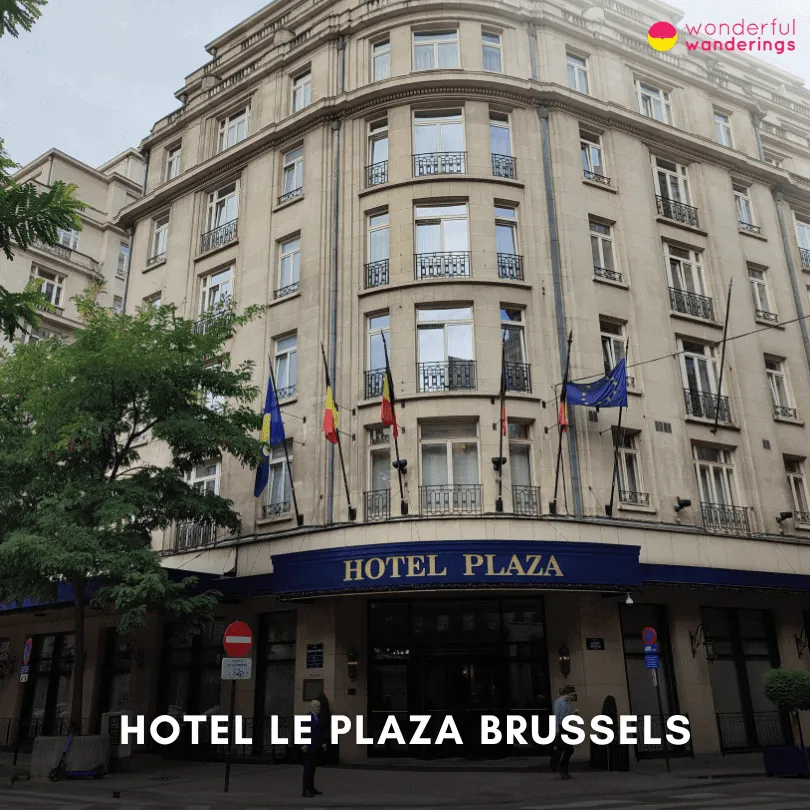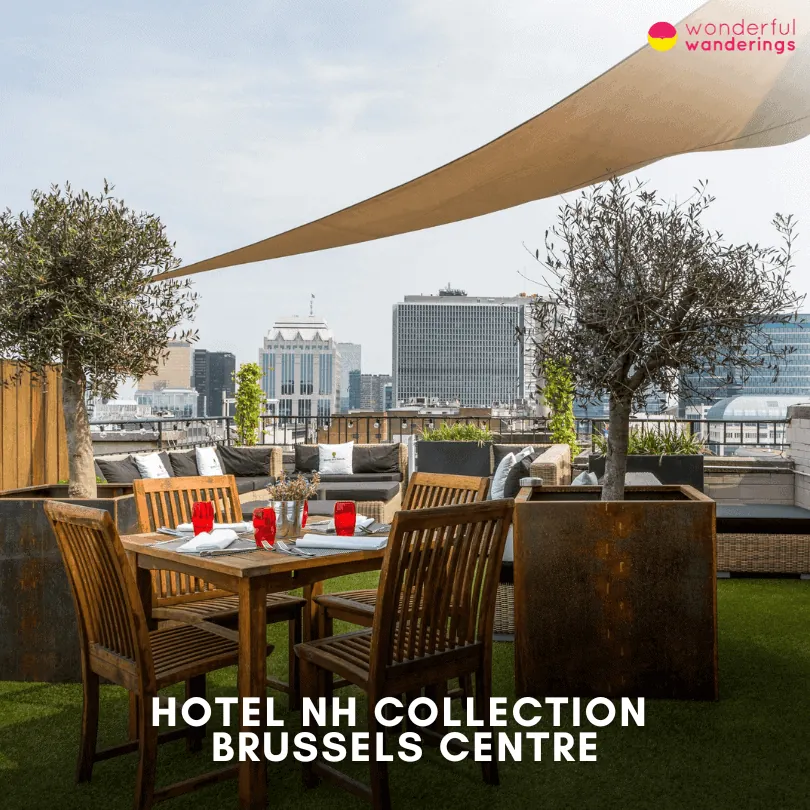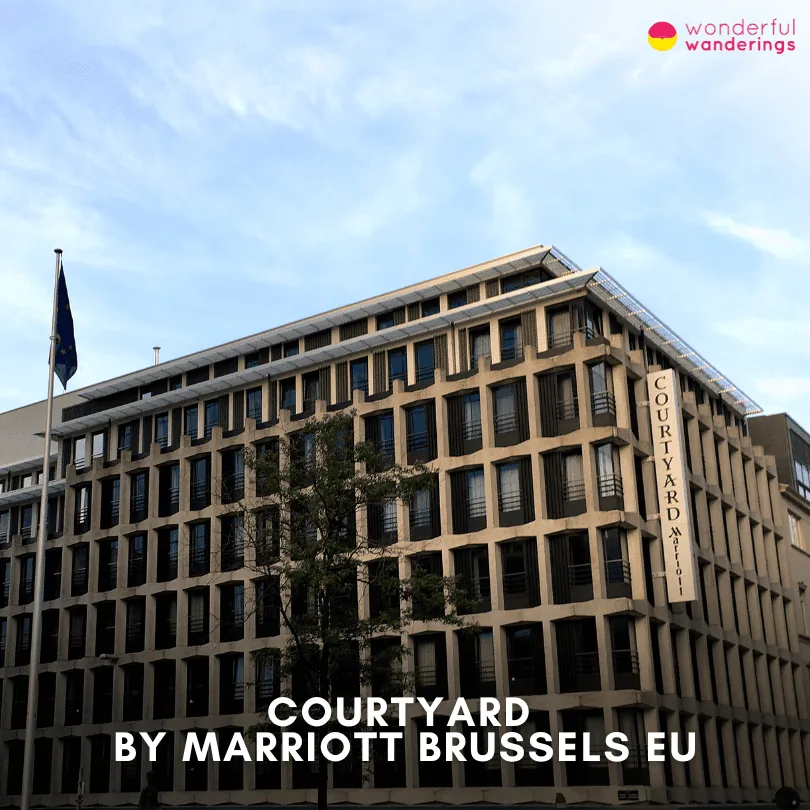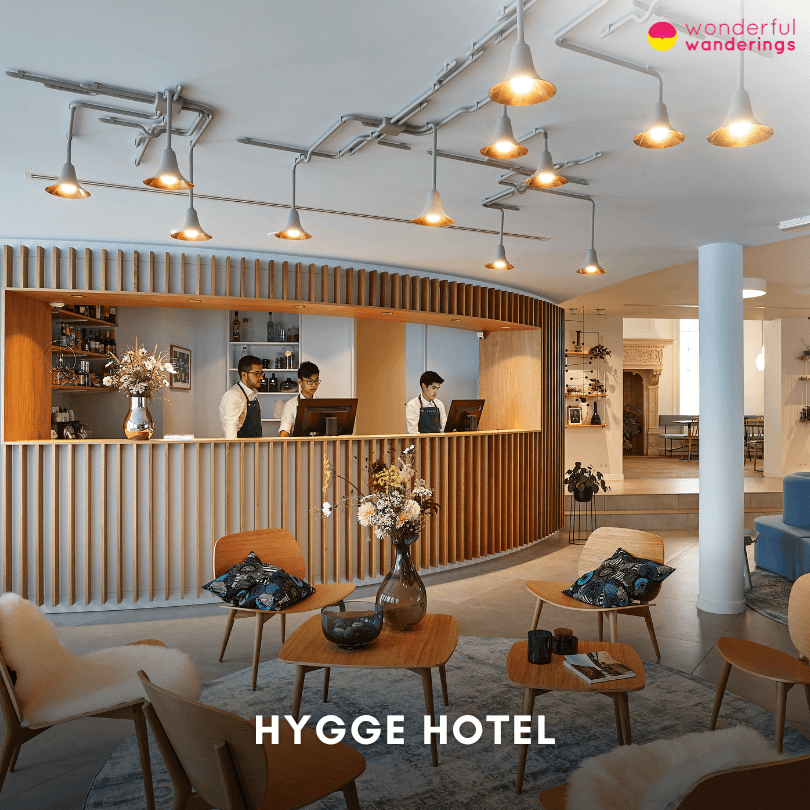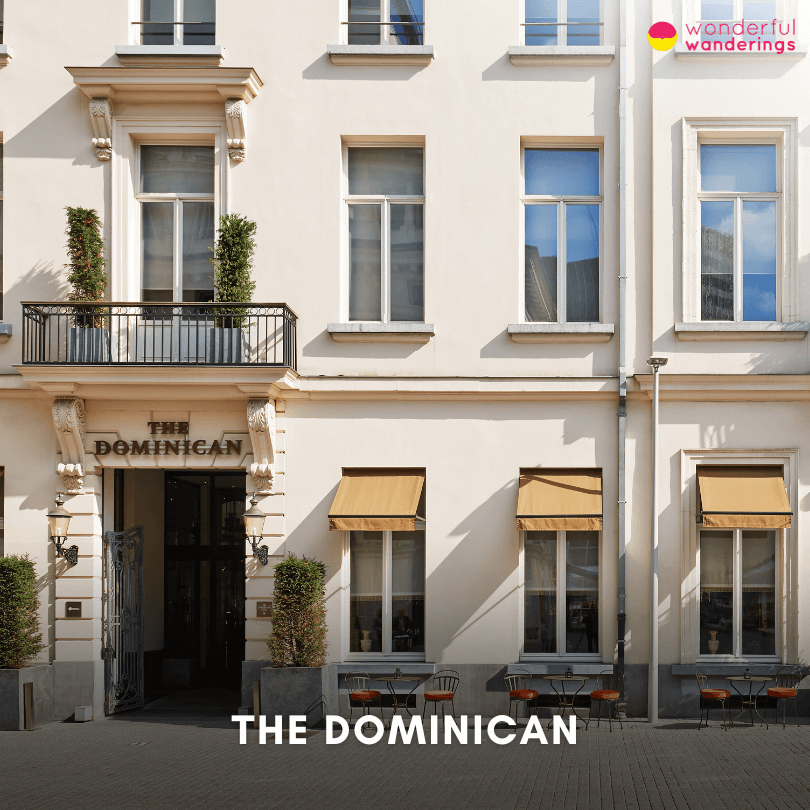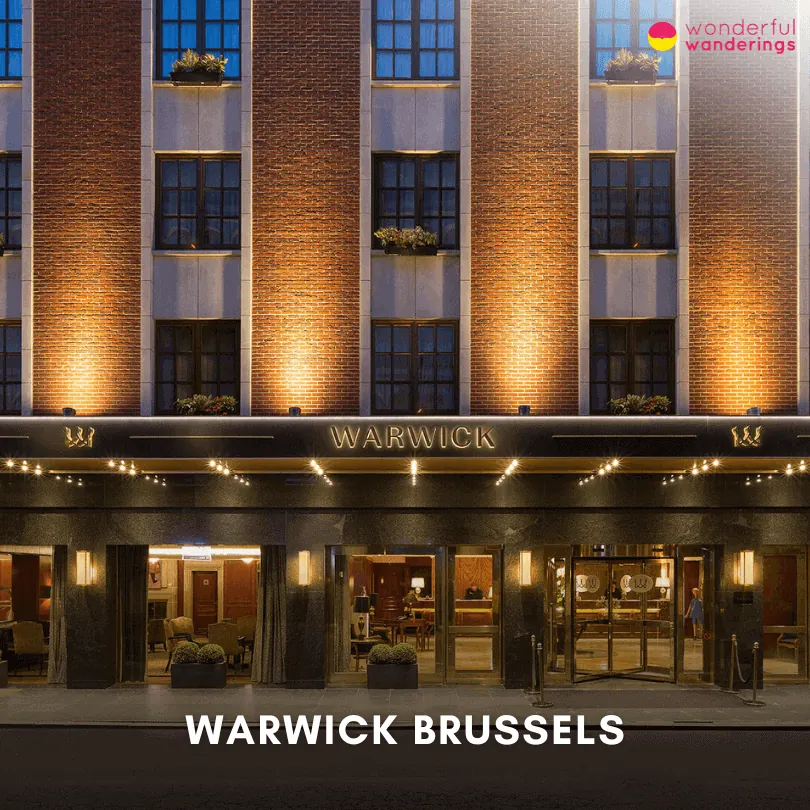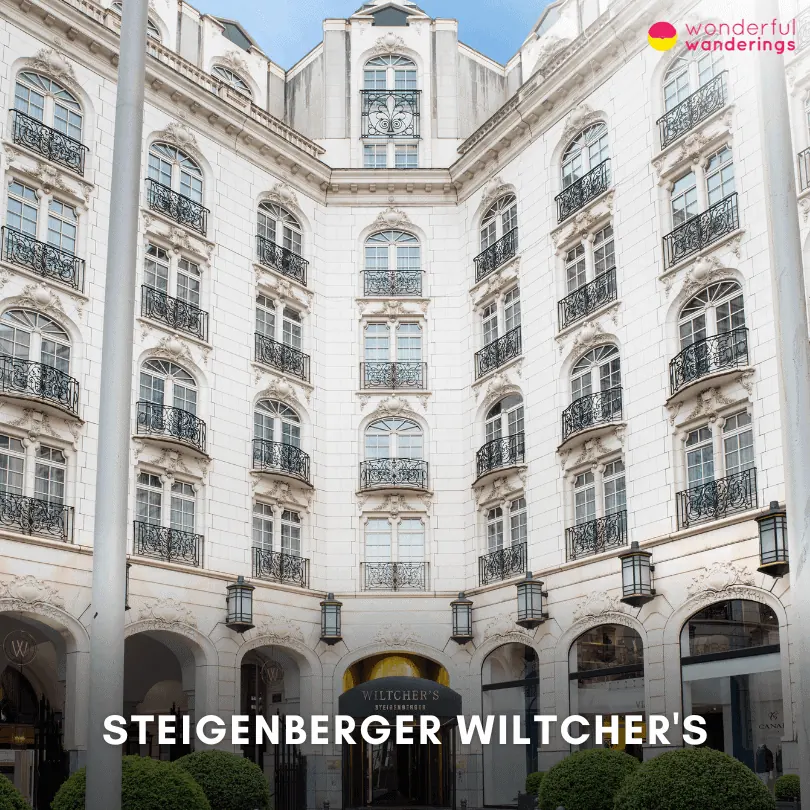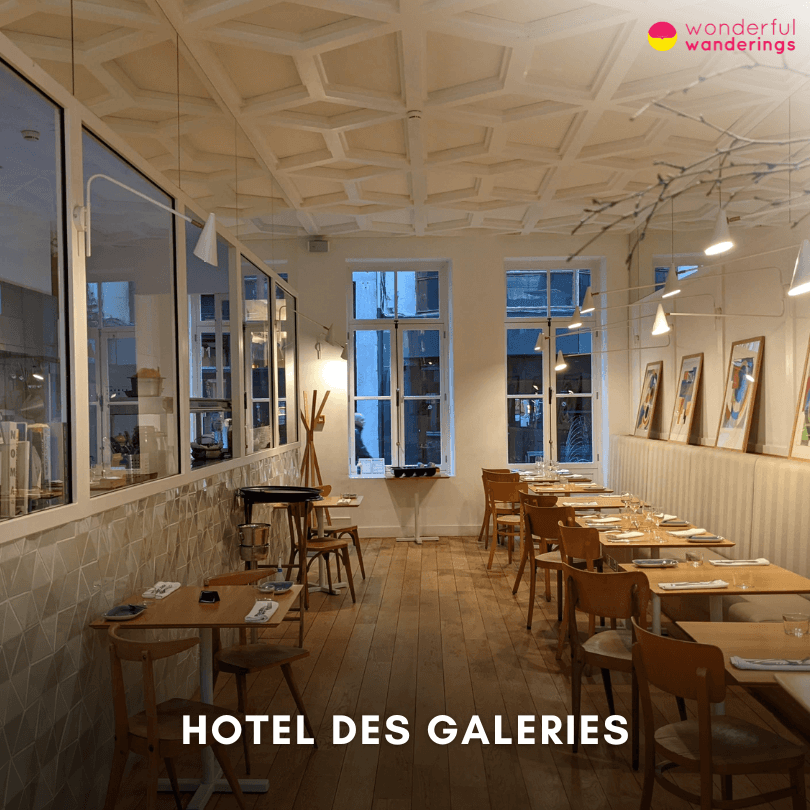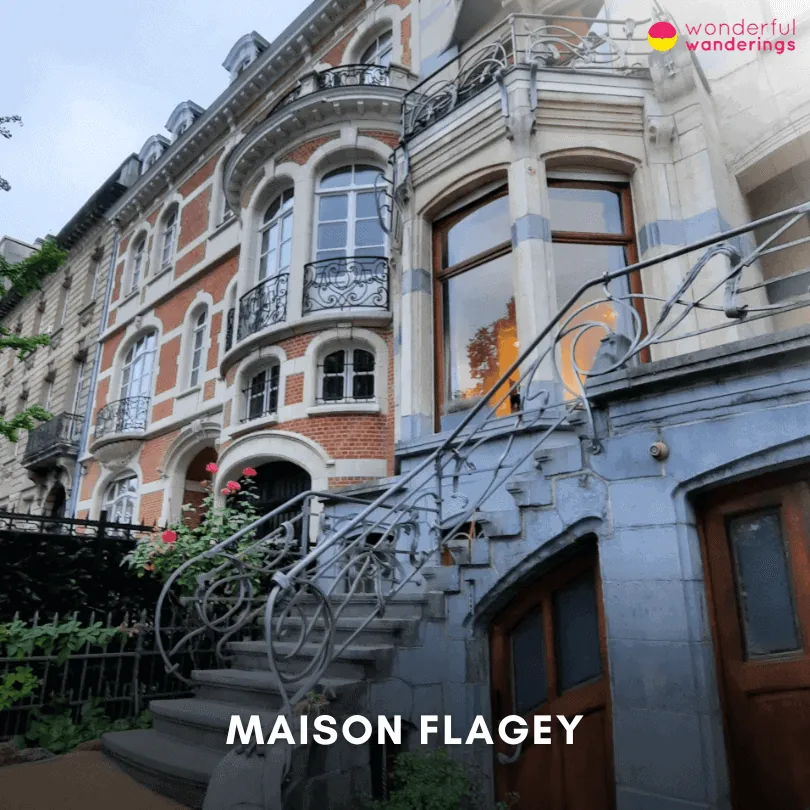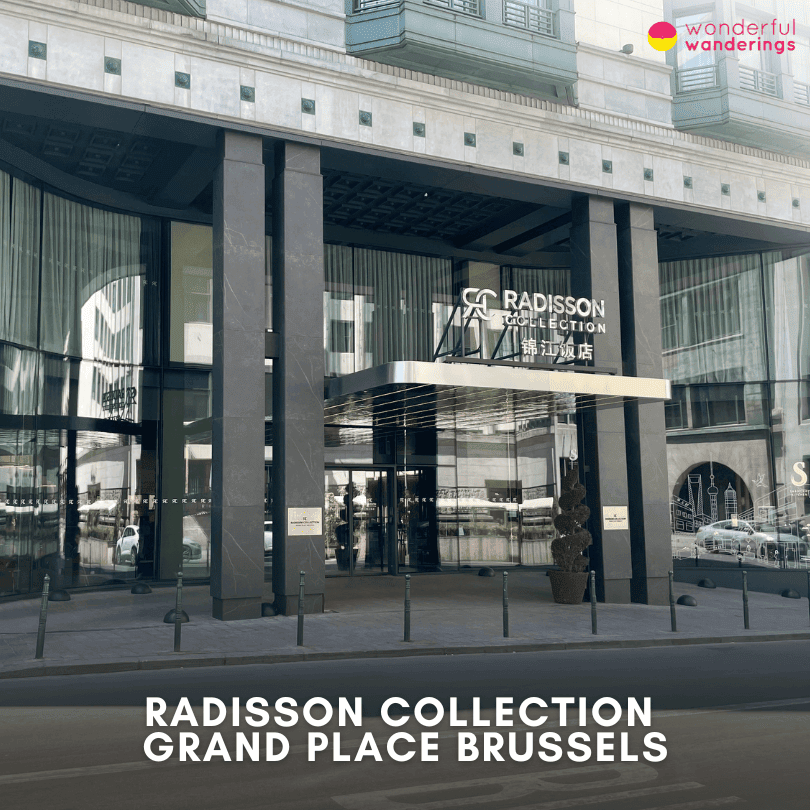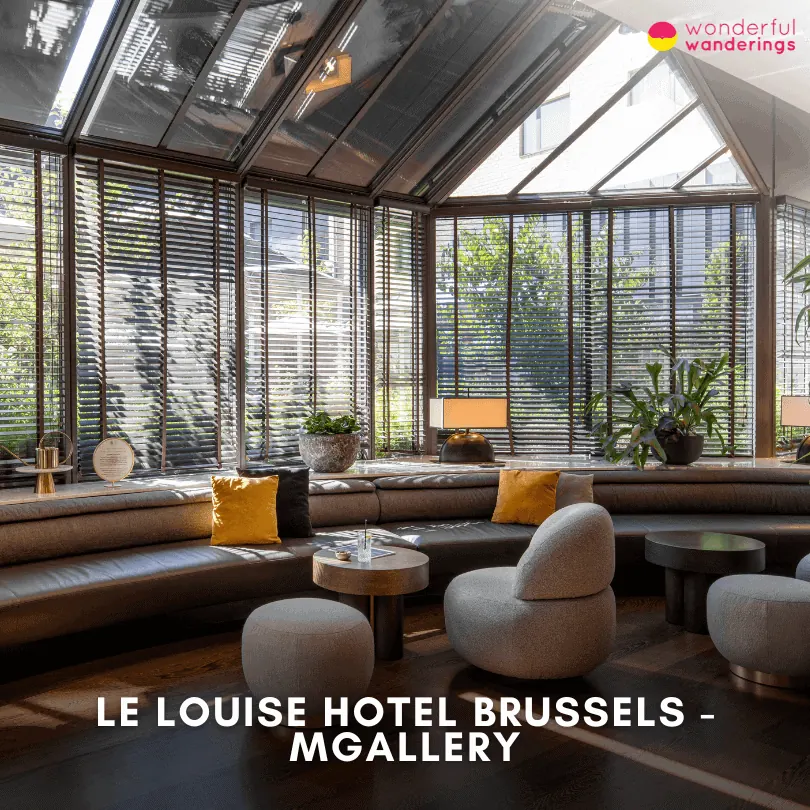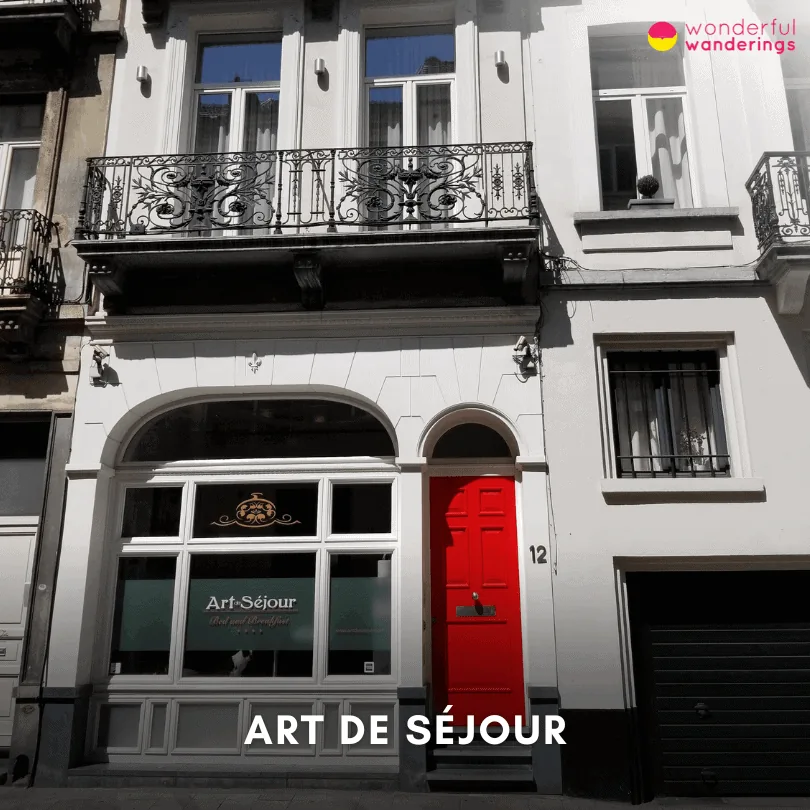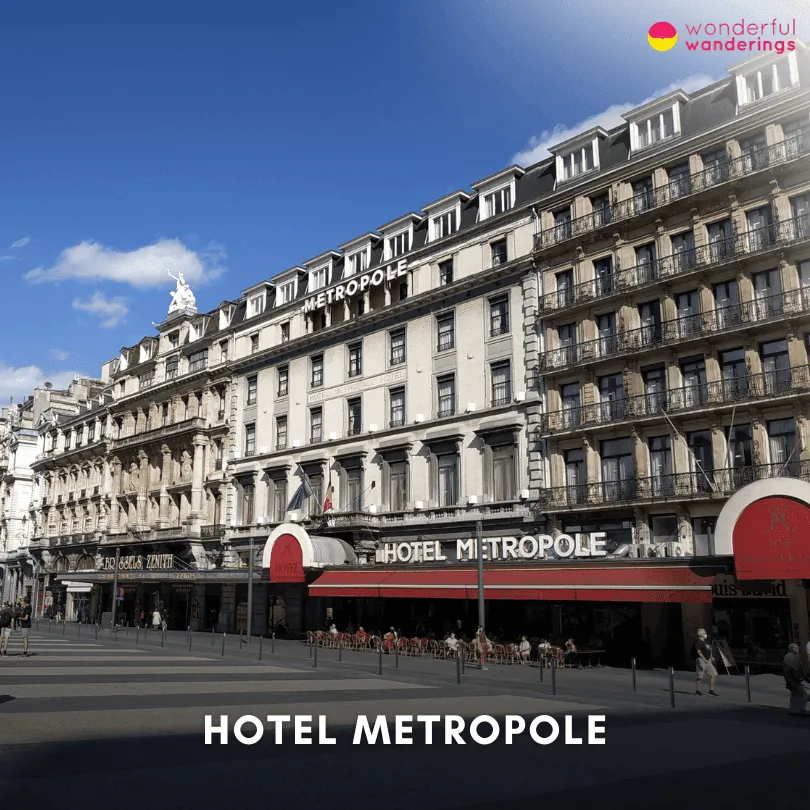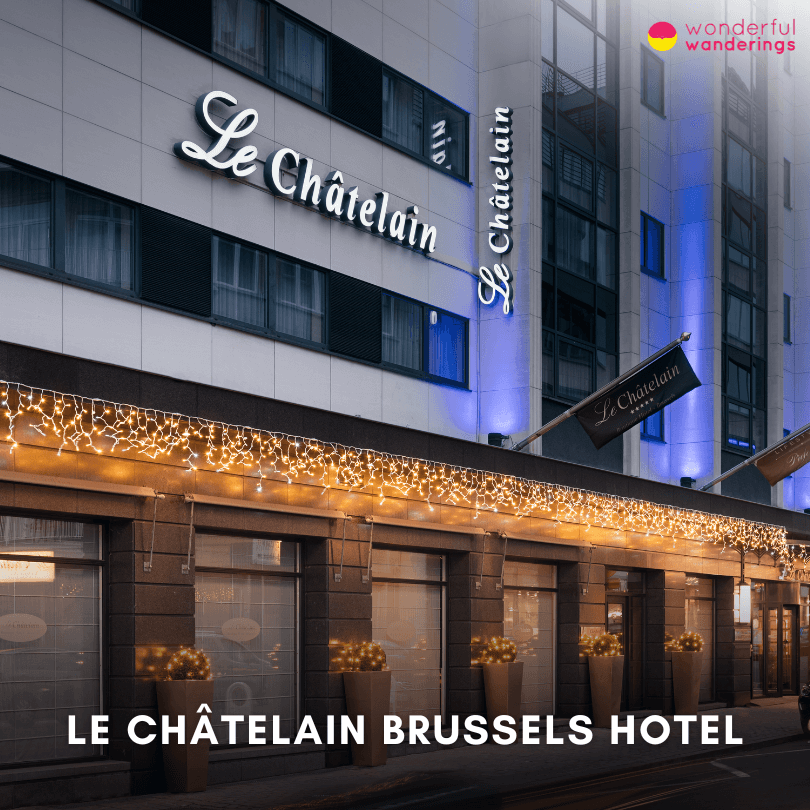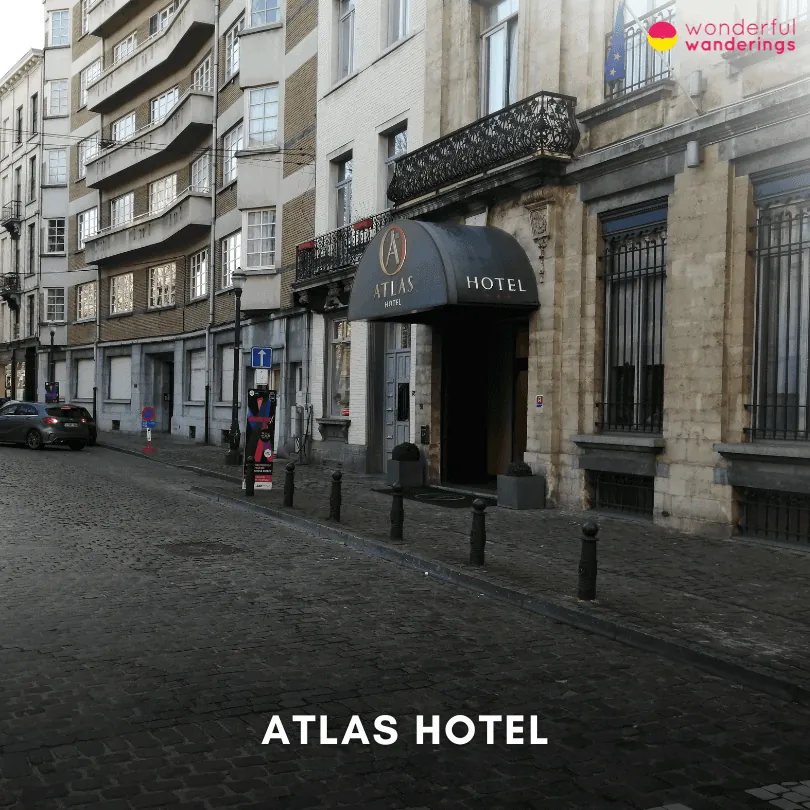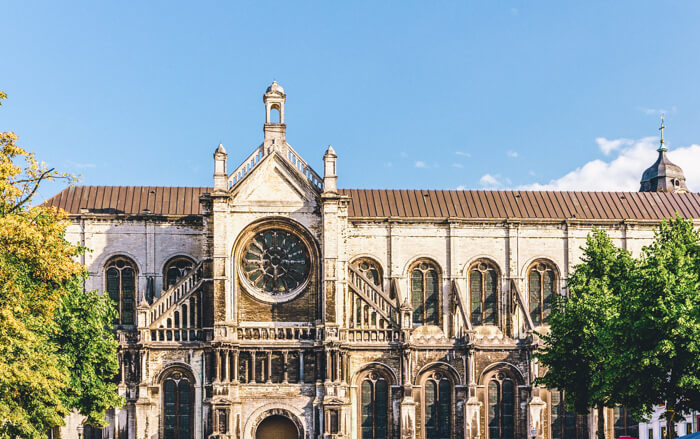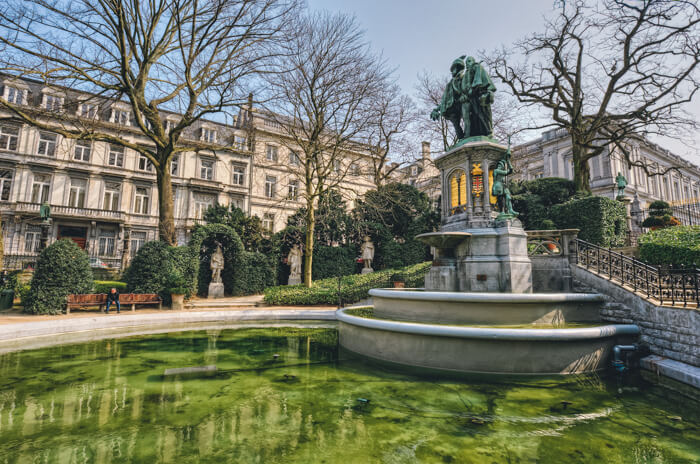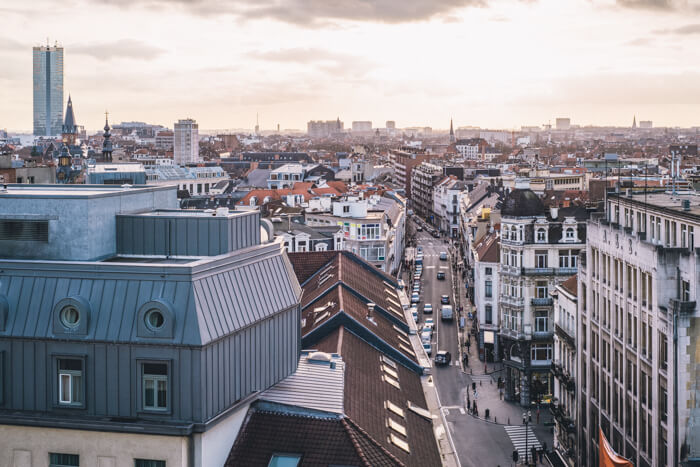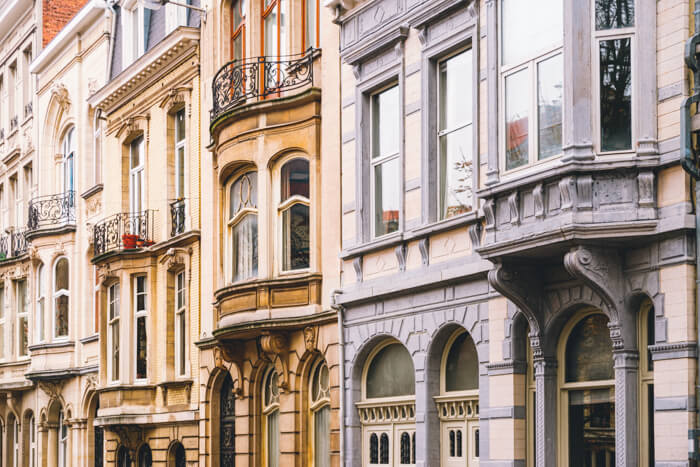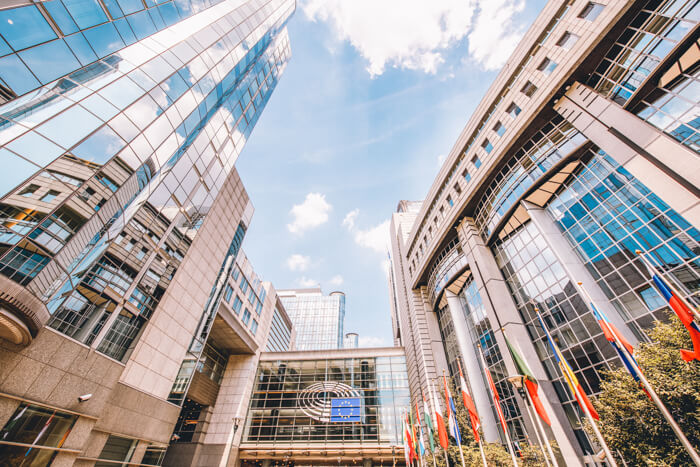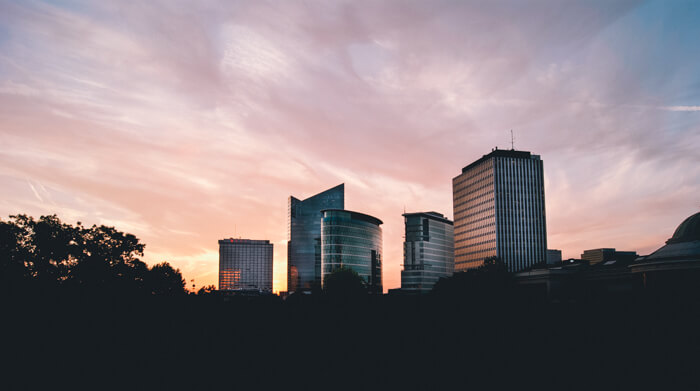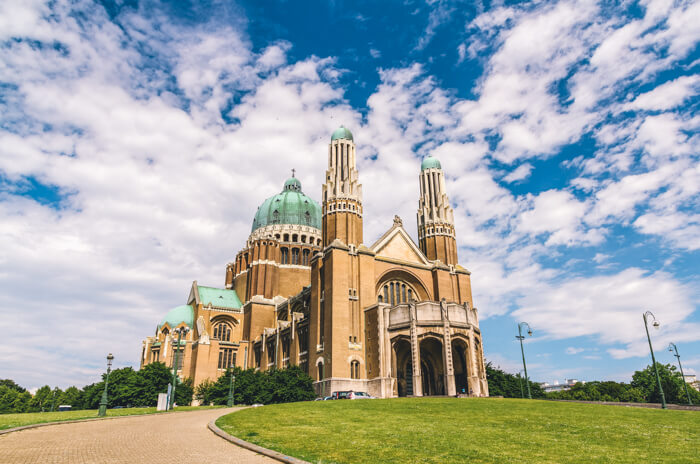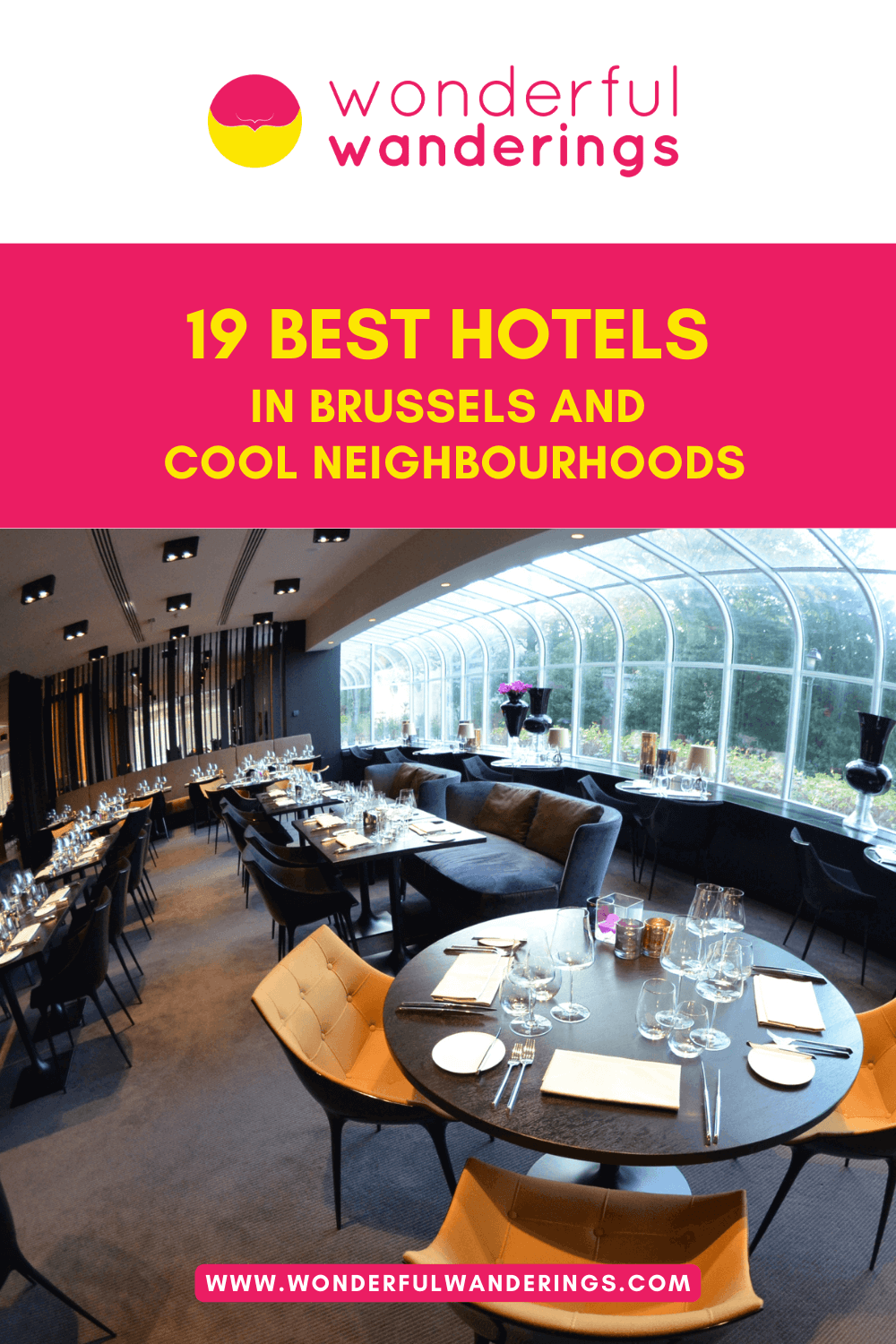Brussels offers a range of excellent hotels that cater to different budgets and preferences. Brussels has several high-end hotels that provide top-notch amenities and impeccable service for those looking for a luxurious stay. These hotels offer elegantly designed rooms or suites, spa facilities, fine dining restaurants and convenient locations in the heart of the city. Guests can expect a comfortable and indulgent experience, with services tailored to meet their every need, while travelers on a tighter budget can find a variety of affordable hotels and budget-friendly accommodations in Brussels. These establishments provide comfortable and clean rooms, often with amenities such as free Wi-Fi, breakfast and convenient access to public transportation. Brussels also offers boutique hotels that provide a unique and personalized experience. These smaller-scale establishments often have stylish and distinctive interiors, with attention to detail and personalized service. They offer an intimate atmosphere for guests seeking a more intimate and cozy stay.
Listed below are the best hotels in Brussels:
- Hilton Brussels Grand Place: The Hilton Brussels Grand Place features air-conditioned rooms with free Wi-Fi, LCD TVs, minibars and coffee facilities. Executive Rooms and Suites grant access to the Executive Lounge, where guests can enjoy complimentary breakfast and refreshments. The hotel welcomes families and provides accommodations for disabled guests.
- The Novotel Brussels City Centre: The Novotel Brussels City Centre is a modern and conveniently located hotel in Brussels. Its comfortable rooms, on-site dining options, fitness center and business facilities aim to provide a pleasant and convenient stay for its guests visiting the city of Brussels.
- Novotel Brussels Centre Midi Station: The Novotel Brussels Centre Midi Station is a well-appointed hotel near the train station offering comfortable rooms with amenities like air conditioning and mini fridges. It has standard rooms and suites to choose from along with an on-site restaurant, bar, fitness center and sauna for relaxation.
- The President Brussels Hotel: The President Brussels Hotel is a four-star hotel located in the business district near train stations, offering rooms and suites with modern amenities. Guests can relax in the 3000 square meter garden or dine at the bar-restaurant serving international cuisine. It also has a fitness center, parking and event spaces.
- Hotel Le Plaza Brussels: Hotel Le Plaza Brussels is a 4-star historic hotel in central Brussels offering 178 rooms, from basic twins to executive suites, with amenities like premium bath products and views of the city. It has a restaurant, bar, fitness center, indoor pool and conference rooms, along with 24/7 concierge service.
1. Hilton Brussels Grand Place
The Hilton Brussels Grand Place is a part of the Hilton Hotels & Resorts chain and offers a range of amenities for guests. The hotel is in the heart of the historic city center, between the Grand Place and the Square Meeting & Convention Centre. It is conveniently placed near the central train station, making it easily accessible for travelers. The hotel provides various amenities to ensure a comfortable stay. The rooms are air-conditioned and feature free Wi-Fi, LCD TVs, minibars and coffee facilities. Guests booking Executive Rooms or Suites have access to the Executive Lounge, which offers complimentary full breakfast, snacks and drinks. The hotel also has a fitness center, Sentro À Table Avec Vincent Masson restaurant and a bar. The Hilton Brussels Grand Place welcomes children and families. Family rooms are available and the hotel offers facilities for disabled guests. It is close to the central train station and within walking distance of the Grand Place, restaurants and tourist shops.
Check reviews on Tripadvisor / Check prices on Booking.com
2. Novotel Brussels City Centre
The Novotel Brussels City Centre is a modern and comfortable hotel that caters to both business and leisure travelers. It provides well-appointed rooms that are designed with comfort in mind. The rooms are equipped with amenities such as air conditioning, a flat-screen TV, a minibar and a private bathroom. Guests can choose from different room types, including standard rooms and suites, depending on their preferences and needs. To cater to the needs of business travelers, the hotel offers a business center with various services, including photocopying and fax facilities. Meeting rooms are also available for conferences, seminars or other business events.
The Novotel Brussels City Centre features an on-site restaurant offering a diverse international and local cuisine menu and a bar where guests can unwind and enjoy a selection of beverages. The hotel provides a fitness center where guests can exercise and stay active during their stay. A sauna is also available for guests who want to indulge in relaxation and rejuvenation. It is within walking distance of many popular attractions, including the Grand Place, the Manneken Pis statue and the Royal Palace. The hotel is well-connected to public transportation, making it easy for guests to explore the city and its surroundings.
Check reviews on Tripadvisor / Check prices on Booking.com
3. Novotel Brussels Centre Midi Station
The Novotel Brussels Centre Midi Station is a contemporary and convenient hotel that offers a range of amenities to ensure a comfortable and enjoyable stay for its guests. It provides well-appointed rooms designed to provide comfort and convenience. The rooms feature amenities such as air conditioning, a flat-screen TV, a minibar and a private bathroom. Guests can choose from different room types, including standard rooms and suites, based on their preferences and requirements. When it comes to dining options, the Novotel Brussels Centre Midi Station features an on-site restaurant that serves a diverse menu of international and local cuisine. Alongside the restaurant is a bar where guests can unwind and enjoy a selection of beverages. For those seeking relaxation and exercise, the hotel provides a fitness center where guests can work out and stay active during their stay. A sauna is also available for guests to relax and rejuvenate. The Novotel Brussels Centre Midi Station enjoys a strategic location near the Midi train station in Brussels.
Check reviews on Tripadvisor / Check prices on Booking.com
4. The President Brussels Hotel
The President Brussels Hotel is a four-star hotel in Brussels, Belgium. It is located in the city’s business district, near the Brussels-North Train Station and the City 2 Shopping Center. The hotel offers comfortable and spacious rooms and suites equipped with modern amenities and cozy bedding. Some rooms have a garden view, which is a rare feature in the city center. The hotel has a fitness center, private parking and a 3000 square meter garden terrace, where guests can relax and enjoy a drink. The hotel also has a bar-restaurant, which serves a variety of dishes, such as seafood, sushi, steak and salad. The hotel provides a breakfast buffet every morning, with views of the garden. The hotel can also host events and meetings, with 20 fully-equipped meeting rooms and a banquet menu.
The President Brussels Hotel is a good choice for travelers who want to explore the city and its attractions, such as the Grand Place, the Saint-Hubert Gallery and the Docks Bruxsel shopping center. The hotel is easily accessible by public transport, with the Rogier Metro Station and the Brussels-North Train Station within walking distance. The hotel is also close to the Brussels-South Train Station, which offers connections to international destinations with Thalys or Eurostar. The Brussels International Airport is a 30-minute drive from the hotel. The average price for a room at The President Brussels Hotel is 80 € ($93, £67) per night, depending on the season and the availability. The price for the private parking is 20 € ($23, £17) per day, while the price for the breakfast buffet is 15 € ($17, £13) per person per day.
Check reviews on Tripadvisor / Check prices on Booking.com
5. Hotel Le Plaza Brussels
Hotel Le Plaza Brussels is a highly-rated 4-star hotel located in central Brussels near attractions such as the Grande Place and Manneken Pis. It was constructed in the early 20th century and has retained its historical beauty through modernized rooms and facilities. It houses 178 guestrooms, from basic twins to spacious executive suites. Standard rooms provide comfortable beds, work areas, premium bath amenities and high-speed internet. Guests can choose interior views or those of surrounding streets. Superior rooms are more spacious, while junior suites offer panoramic city vistas. Top suites on the highest floors have private balconies overlooking Brussels’ skyline. Amenities include a full-service restaurant and bar, often busy with locals. Belgian and European cuisine is served daily. A fitness center remains open all hours for workouts. An indoor swimming pool provides exercise and relaxation. Conference facilities of varying capacities are suitable for corporate events. Staff offer travel and dining recommendations through 24-hour concierge support.
Check reviews on Tripadvisor / Check prices on Booking.com
6. Hotel NH Collection Brussels Centre
The NH Collection Brussels Centre is a well-appointed hotel that offers guests comfortable accommodations and modern amenities. The hotel is on Boulevard Adolphe Max 7, providing easy access to the city’s attractions and transportation options. The hotel offers a range of amenities to ensure a pleasant stay for guests. These include free Wi-Fi throughout the property, a fitness center and a rooftop terrace with a panoramic view of Brussels. The rooms are air-conditioned, featuring parquet floors, blackout curtains and coffee facilities. The hotel also has a top-floor breakfast room where guests can enjoy.
The NH Collection Brussels Centre has a child-friendly policy, welcoming families with children. It is within walking distance of the Grand Place and the Manneken Pis Statue. The hotel also offers convenient access to Brouckère Metro station, making it easy to explore the city. The hotel provides parking facilities at the nearby Alhambra car park, ensuring convenience for guests traveling by car.
Check reviews on Tripadvisor / Check prices on Booking.com
7. Courtyard by Marriott Brussels EU
The Courtyard by Marriott Brussels EU is a modern hotel that offers comfortable and spacious rooms, providing guests with a relaxing and enjoyable stay. It features amenities such as a fitness center, a business center and a restaurant called Le Cinquante et Un that serves international cuisine. Guests can also enjoy a continental breakfast during their stay.
The Courtyard by Marriott Brussels EU has a child-friendly policy, making it suitable for families. The hotel is located 1.7 kilometers (1.1 miles) from the city center, allowing easy access to the main attractions and landmarks. Free Wi-Fi is provided at the Courtyard by Marriott Brussels EU, ensuring that guests can stay connected throughout their stay. The hotel also offers private parking for an additional fee, providing convenience for guests with vehicles. The hotel has received a rating of 8.7 on Booking.com based on 1,974 reviews. The price for a stay at the Courtyard by Marriott Brussels EU starts from 100 € ($113, £84) per night.
Check reviews on Tripadvisor / Check prices on Booking.com
8. Hygge Hotel
The Hygge Hotel Brussels is located in the Louise area. It is a convenient and central location in the capital city of Brussels. The hotel features authentic materials such as wood, wool and ceramics in its interior design, along with furniture and accessories with simple lines. The amenities include immaculate cleaning and hygiene protocols, a wide-ranging international breakfast selection and free Wi-Fi access. The Hygge Hotel Brussels welcomes children and pets. The hotel is known for its excellent location for shopping, business, dining and bars. It offers easy access to the city center, allowing guests to explore Brussels’s attractions and cultural sites. Parking spaces may be available and it is recommended to inquire about parking options when making a reservation.
Check reviews on Tripadvisor / Check prices on Booking.com
9. The Dominican
The Dominican is a boutique hotel located in Brussels’s city center. It offers a comfortable and stylish accommodation experience for its guests. The hotel features a variety of amenities to enhance the stay of its visitors, such as well-appointed rooms and suites inspired by the site’s rich history, climate control, complimentary high-speed Wi-Fi, Nespresso and tea amenities, in-room safes, hairdryers, bathrobes, slippers and ironing facilities. Guests can also enjoy a delicious breakfast, dine at the on-site restaurant and bar and relax in the elegant hideaways provided by the hotel. The Dominican has a child-friendly policy, welcoming families with children.
Check reviews on Tripadvisor / Check prices on Booking.com
10. Warwick Brussels
The Warwick Brussels is a modern hotel in the heart of Brussels, Belgium. It is conveniently located just a 2-minute walk from the Grand Place and Brussels Central Station, making it an ideal choice for travelers. It belongs to the Warwick International Hotels and Resorts chain and offers a range of amenities and services to ensure a comfortable stay for its guests. The hotel features modern rooms equipped with a flat-screen TV, free internet access and a marble bathroom. Guests can enjoy an American buffet breakfast in the salon and have access to a fitness center and sauna. The Chutney’s bar-restaurant offers meals and cocktails with a terrace overlooking the Grand Place and a piano bar for evening entertainment.
Warwick Brussels has a child-friendly policy, welcoming families with children while pets are not allowed in the hotel. The hotel’s excellent location in the city center allows guests to explore the nearby attractions, shops and restaurants easily. Free Wi-Fi is provided throughout the hotel and parking is available on-site for a fee of 25 € ($29, £21) per day.
Check reviews on Tripadvisor / Check prices on Booking.com
11. Steigenberger Wiltcher’s
Steigenberger Wiltcher’s is a famous upscale five-star hotel in Brussels, Belgium. It is part of the prestigious Steigenberger Icons collection and is located on Avenue Louise in the exclusive district of Brussels. The hotel uniquely blends sophistication, history and warmth, providing guests with a quintessentially Belgian experience.
Steigenberger Wiltcher’s offers a range of luxurious amenities and services. Guests can enjoy complimentary Wi-Fi throughout the hotel, a generous breakfast in the café and exquisite dining options, including the Michelin-starred restaurant “La Canne en Ville”. The hotel features a bar, terrace, library, pool, spa and fitness gym with modern cardio equipment. For business travelers, there are 13 conference rooms available, accommodating up to 600 people.
Steigenberger Wiltcher’s welcomes children up to 6 years old to stay free of charge in their parent’s room when using existing beds. Children between 7 and 12 years old can stay with an additional fee of 50€ ($45.76, £40.03) per night. Pets are allowed at the hotel upon request but are subject to a fee. The hotel provides a convenient parking facility nearby.
Check reviews on Tripadvisor / Check prices on Booking.com
12. Hotel des Galeries
Hotel des Galeries is a boutique hotel under the magnificent vaults and windows of the Royal Galleries of Saint-Hubert. Its 23 rooms and suites provide a curated and contemporary atmosphere. The hotel features amenities such as free Wi-Fi, allowing guests to stay connected during their stay. The hotel is ideally on Rue des Bouchers, just a few steps away from the famous Grand Place and Manneken-Pis. It is part of the Galeries Royales Saint-Hubert, surrounded by luxury boutiques and artisan shops. Guests can easily explore the city’s attractions and immerse themselves in the atmosphere of Brussels. Hotel des Galeries offers a child-friendly environment, making it a suitable choice for families.
Check reviews on Tripadvisor / Check prices on Booking.com
13. Maison Flagey
Maison Flagey is a characterful guesthouse located in the quiet and pleasant neighborhood of Etangs d’Ixelles, Brussels. Housed in a typical “Brussels” house built in 1920, it offers guests a peaceful and comfortable atmosphere. The guesthouse has been carefully designed to maintain the authenticity of its Art Nouveau architecture while providing modern comforts. It features a beautiful city garden and terrace where guests can relax. Maison Flagey is conveniently just a few steps away from the lively Place Flagey, known for its atmosphere, bars, restaurants and weekly market.
Maison Flagey offers a variety of rooms and studios for guests to choose from. Each room has been tastefully decorated and includes amenities such as a king-size bed, a desk, a seating area with chairs or a sofa, a wardrobe or dressing, a television and a private bathroom with either a bathtub or an Italian shower. Some rooms also feature terraces offering views of the surroundings. The guesthouse provides free Wi-Fi throughout the property and an elevator is available to access all floors. Maison Flagey is a non-smoking establishment that does not allow pets.
Maison Flagey is conveniently positioned for exploring Brussels. It is within walking distance of the dynamic Place Flagey, where guests can find various transportation options such as trams, buses and taxis. The Avenue Louise, European Commission district, Sablon and the historic city center, including the Grand Place, can be reached within a few minutes by public transport or a short drive. The guesthouse provides a comfortable and well-connected base for guests to experience the city’s attractions and amenities.
Check reviews on Tripadvisor / Check prices on Booking.com
14. Radisson Collection Grand Place Brussels
The Radisson Collection Grand Place Brussels is a modern hotel that offers guests comfortable accommodations and a range of amenities. The hotel features spacious rooms with stylish decor, comfortable beds and views of the grand atrium, city streets or the neighboring courtyard. It offers free unlimited Wi-Fi throughout the property, allowing guests to stay connected during their stay. The hotel also has two restaurants, including the Atrium Bar, which serves signature cocktails and international dishes and the Shanghai Kitchen restaurant, which offers authentic and refined Shanghainese cuisine.
The Radisson Collection Grand Place Brussels provides a child-friendly environment and welcomes families. It offers amenities such as a fitness center and 18 revamped meeting rooms, catering to both leisure and business travelers. The hotel is pet-friendly, allowing guests to bring their furry companions along during their stay. The hotel is conveniently located near the city center and is also close to major attractions such as the Grand Place, the Rue Neuve shopping area and Brussels Central Station. The hotel offers on-site parking for guests with vehicles for an additional fee of 35 € ($41, £30) per day. The Radisson Collection Grand Place Brussels has received positive reviews on TripAdvisor, it has an overall rating of 8.3 out of 10 based on 7,084 reviews.
Check reviews on Tripadvisor / Check prices on Booking.com
15. Le Louise Hotel Brussels – MGallery
Le Louise Hotel Brussels – MGallery is a luxury hotel located on Avenue de la Toison d’Or in Brussels, Belgium. It is part of the MGallery Hotel Collection, offering guests a sophisticated and elegant experience. The hotel features 159 contemporary and elegant rooms, including 10 suites, which are tastefully decorated and equipped with modern amenities. Guests can enjoy a comfortable stay with amenities such as king-size beds, rain showers, HD televisions, minibars and air conditioning.
Le Louise Hotel Brussels welcomes children and provides baby cots upon request. The hotel is centrally located, making it an ideal starting point for exploring the city. It is in the upper part of Brussels, between the Grand Place, the European district and the Bois de la Cambre. The hotel is easily accessible by public transport, with the Louise metro station just a short walk away.
Check reviews on Tripadvisor / Check prices on Booking.com
16. Art de Séjour
Art de Séjour is a bed and breakfast hotel housed in a fully renovated neoclassical townhouse from the 19th century, combining authentic architectural elements with modern amenities. The hotel offers 4 spacious luxury rooms with walk-in double showers and 1 room with a bath. Each room is equipped with a flat-screen TV, iMac, professional Nespresso machine and complimentary mini-bar. Guests can enjoy a continental breakfast served every morning in the breakfast room. The hotel provides free high-speed WiFi and air conditioning throughout the property.
Art de Séjour has a policy of not accommodating babies or children younger than 15 years old. Pets are not allowed in the hotel. The hotel is in the historical neighborhood of St-Jacques, within walking distance of popular attractions such as the Manneken Pis and the Grand Place. It is conveniently located near public parking, with a parking garage just 50 meters (0.1 miles) away. The central station is 800 meters (0.5 miles) away, offering direct connections to Brussels International Airport, Bruges, Antwerp and other destinations.
Check reviews on Tripadvisor / Check prices on Booking.com
17. Hotel Metropole
Hotel Metropole Brussels is an Art Deco hotel located in the historical center of Brussels, Belgium. It is a 5-star hotel that dates back to 1895. The hotel offers a range of amenities, including a fitness center, terrace and 24-hour room service. Guests can enjoy premium brasserie-style cuisine at Cafe Metropole and the breakfast room is designed with the layout of the Akshardham Temple in Delhi, India. The hotel provides free Wi-Fi in all areas and offers public parking nearby for a fee. Hotel Metropole Brussels welcomes children of all ages and is pet-friendly, although charges may apply for bringing pets. The hotel’s policy allows for a maximum of three guests per room. The hotel’s location is convenient, as it is only a 10-minute walk from Grand Place and Brussels Central Station, close to the city center.
18. Le Châtelain Brussels Hotel
The Le Châtelain Brussels Hotel is a luxury 5-star boutique hotel located in Brussels, Belgium. It offers 107 spacious and luxurious guest rooms and suites. The hotel is in the heart of Brussels, close to entertainment, shopping and business areas. It is owned by a Belgian family and provides a welcoming and authentic atmosphere for its guests. The hotel offers various amenities, including the B’Artist Café, where a full American Breakfast Buffet is served every morning and La Maison du Châtelain, a bar restaurant with a cozy and intimate ambiance. Guests can enjoy dining close to the fireplace or savor a cocktail in the beautiful garden. The hotel also features conference and meeting facilities for up to 300 guests, a top-floor fitness center and private indoor parking with valet service. The Le Châtelain Brussels Hotel welcomes children and allows pets. It provides free Wi-Fi to guests, ensuring they stay connected during their stay. The hotel is located a short distance from the city center, making it convenient for guests to explore the attractions and landmarks of Brussels.
Check reviews on Tripadvisor / Check prices on Booking.com
19. Atlas Hotel
The Atlas Hotel is a 3-star hotel in the trendy “Downtown Brussels” area, between the Halles St-Gery and Rue Antoine Dansaert. The hotel is ideally positioned for business and leisure travelers, just minutes from the Grand Place, the famous square in the city. The hotel provides a range of amenities to ensure a comfortable stay for guests. These amenities include free Wi-Fi access throughout the hotel, allowing guests to stay connected during their visit. The Atlas Hotel also offers a buffet breakfast for guests, served from 07:00 am to 10:00 am, providing a variety of options to start the day. It features a meeting room that can accommodate up to 30 people, making it suitable for business meetings, seminars and conferences. The Atlas Hotel is just a 4-minute walk from the Grand Place, considered the most beautiful square in the world. The hotel’s central location allows guests to easily explore the surrounding area, including the Fish Market, St-Gery area and Rue Antoine Dansaert, with its designer fashion boutiques and popular cafes.
What are the cool neighbourhoods to stay in Brussels?
Brussels is split into different municipalities, each with its own unique flavor. Walking between them can feel like flitting between different trailers at the movie theater, so if you’re looking to find a long-term apartment in Brussels to rent, it’s important to understand the varying vibes of the different districts when choosing where to stay in Brussels.
The good news is that wherever you stay in Brussels, you’ll get to experience the whole city as it’s very easy to get around and small enough to travel from one area to another quickly. Public transport in Brussels is great, especially the metro system which the locals rely on. You can also use the city as a base to visit other Belgian hubs like Ghent, Antwerp, and Bruges, and you can get to the rest of Europe pretty easily too.
Whether you want to be in the historic heart of Brussels with its jaw-dropping architecture, or a trendy urban neighborhood on the brink of gentrification, or close to a shopping street like Avenue Louise, or an outlying area known for its parks and flea markets – there’s a place for everyone.
Find below the 10 coolest neighbourhoods to stay in Brussels.
- Brussels city center: Must-see sights like Grand Place, Gothic architecture, museums, Manneken Pis statue. Touristy but beautiful medieval heart of the city, with shops, chocolate, restaurants, and lively nightlife.
- Saint Gery: Trendy nightlife district to experience live music in the streets and local bars. Soak up the atmosphere at the repurposed Les Halles Saint Gery market.
- Sablon: Charming neighborhood to explore the weekend antique market at Grand Sablon square and sample chocolate at the many boutique shops.
- Les Marolles: Grittier area to experience flea markets, multicultural food, and glimpse local life. More affordable accommodation in an ancient district undergoing changes.
- Ixelles: Stay in this youthful, creative hub with universities and art galleries. Great shopping and dining, plus green spaces for relaxing. Close to central sights too.
- Saint Gilles: Bohemian area off the tourist track to uncover art nouveau architecture, galleries, museums, vintage shops and charming cafes.
- European Quarter: See the modern EU architecture while staying in this upscale business district. Impressive museums and access to transport for sightseeing.
- Molenbeek-Saint-Jean: Diverse, affordable area to take in leafy streets and historic castle. Experience an alternative side of Brussels as the district transforms.
- Saint Josse-ten-Noode: Residential district for truly immersing in local life and cuisine from Brussels’ many immigrant communities, at low costs.
- Koekelberg: Quieter area further from the center to enjoy sweeping city views from the towering Basilica of the Sacred Heart. More local authenticity.
1. Brussels city center
All 19 of Brussels’ municipalities branch out from a very condensed city center, which is where a lot of the most famous and historic sites can be found. This largely medieval area is boxed in by a series of boulevards called “le petit ring” (the small ring), making a pentagon shape.
This is where you’ll find the Grand Place, a stunning town square surrounded by dazzlingly ornate buildings like the gothic Town Hall of the City Of Brussels, and Brussels City Museum. It is a UNESCO World Heritage Site and considered one of the most beautiful squares in Europe.
It’s particularly beautiful at night, with the city lights illuminating the buildings, and a Christmas, when there’s a light show.
The streets that spiral out from the Grand Place are stuffed full of restaurants, chocolatiers, bars, antique dealers and interesting shops. There’s plenty of marveling to be done at the impressive Stock Exchange Palace (much more exciting than it sounds) and the opulent Galeries Royales Saint Hubert, thronging with fashionable and elegant shoppers.
On the corner of two of these busy streets is a small infamous statue that reflects Brussels’ sense of humor – the “Manneken Pis” which translates as “little pissing man”. A small bronze fountain statue designed in the early 17th century, it rather does what it says on the tin! It’s now become a bit of a must-see, although the current one is just a replica – the original is housed in Brussels City Museum.
If you head down a small alley nearby called Impasse de la Fidélité/ Getrouwheidsgang, you can also find a newer, female version called Jeanneke Pis which was created in 1987.
Among the mile-long list of Brussels city center activities is dining at the gourmet restaurants along Rue des Bouchers, watching the opera at the Royal Theater of the Mint, admiring the art nouveau building of the Musical Instrument Museum and visiting the Belgian Comic Strip Center.
This area is one of the best places to stay in Brussels, Belgium, but it’s worth bearing in mind that it is a bit of a tourist magnet. It would suit travelers taking their first trip and those that want all the sights on their doorstep, but if you’re after a bigger slice of authentic Belgian culture, you might be better off staying a bit further out and traveling in to see the main attractions.
2. Saint Gery
A few minutes’ walking from the Grand Place is the old district of Brussels Saint Gery, with all its vibrant bars and evening hubbub. It used to be an island on the River Senne but the waterway has since been covered up and the area completely transformed.
Nowadays it’s mainly known for its nightlife. It’s one of the best neighborhoods to stay in Brussels for live music – in the summer the streets heave with people out for a good time and there are often musicians performing outside cafes and bars, as well as a constant stream within the many music venues themselves. There’s a fantastic range of restaurants here, and of course, Belgian beer.
An old repurposed indoor market called Les Halles Saint Gery is not to miss – here you’ll find an exhibition center and cafe-bar, and a beautiful historic fountain on the site of a former church.
There’s the stunning Sainte Catherine Cathedral, and the modern art gallery of Chartreux Center of Contemporary Art to explore. You can also seek out the final peeing statue that was built as a spin-off from Manneken Pis in Saint Gery – that of a urinating dog called Zinneke Pis.
3. Sablon
Next to the city center is the swanky but charming neighborhood of Sablon. If you fancy being in the core of the old part of the city and close to the popular landmarks but without the crowds that the Grand Place lures, Sablon might be the best area to stay in Brussels for you.
With its quiet cobbled streets and gothic architecture, it’s easy to fall a little bit in love with this district of Brussels, Belgium. It’s focused around two main squares called Grand Sablon and Petit Sablon, and they are grand and well-preserved but have avoided being swarmed with waffle stalls and trinket-sellers. The main railway station is also just a short walk away.
The plaza of Grand Sablon is where you can find the district’s best feature – a weekend antique market that pulls in vendors and customers from afar. The square is completely transformed – sheets are thrown down and laid out with rare books, dusty ornate mirrors, and quirky ornaments. Even if you’re not after an antique, it’s fun to poke about the stalls and soak up the atmosphere.
Architecture lovers can get their fill at the gothic Eglise Notre-Dame du Sablon, which has free entry. It’s a Catholic church built in the 1400s with a stunning vaulted ceiling and striking stained glass windows.
Chocolate has already been mentioned, and it will be again – this is Belgium after all! Sablon is famous for its chocolate shops, and some of its most celebrated brands are based here such as Marcolini, Neuhaus, Godiva, and Leonidas.
4. Les Marolles
Les Marolles is central but very different from the tourist-packed medieval neighborhoods we’ve seen so far. It might be the best area to stay in Brussels for really getting to grips with local life – there aren’t as many tourist attractions and it is mostly a residential area so generally a cheaper place to stay. It’s one of the oldest parts of the city, with Rue Haute one of Brussels’ longest and most ancient streets running in the footprint of an old Gallo-Roman road.
These days this typically working-class neighborhood is being gentrified and bringing in more and more fancy eateries and bars, but it still has an authentic feel. It’s one of the few places in the city where you can hear Dutch being spoken as well as French. Locals here are known as Marolliens after the old dialect that used to be used in this district.
Throughout the years, Les Marolles has accumulated a number of different nationalities and it’s now a diverse hub of different cultures – making the cuisine something to dive headfirst into. Immigrants from North Africa, Spain, Turkey, Syria, France, and more all contribute to a hotpot of flavors.
One of its highlights is the flea market that takes over Place du Jeu de Balle/ Vossenplein every day called Vieux Marché. It’s a great place to bag a bargain and interact with the locals. It’s also known for a lively nightclub scene, with Fuse and Bazaar as two favorites.
Other sights include the Palace of Justice, the organic market of Atelier des Tanneurs, the beautiful Poelaert Square, and Notre-Dame de la Chapelle – one of Brussels’ oldest churches.
5. Ixelles
Ixelles is a trendy area of town to the south of the center (the Grand Place is only a fifteen-minute walk away), that historically used to be a separate town until the growth of the city absorbed it. It’s long been an artistic center, and the birthplace of famous writers, actors, and artists (including Audrey Hepburn).
It’s possibly the best place to stay in Brussels as a student. As it’s home to two universities, the atmosphere here is young and lively. It has a bit of everything – top-quality shopping streets, cobblestone lanes, wooded parks, up-market eateries, art galleries, and interesting architecture.
It’s split down the middle by a significant street called Avenue Louise which is known for its luxury and designer shops and bustling nightlife. Avenue Louise is a pricier boulevard, full of Art Deco buildings and fancy homes of diplomats. The district on the whole is fairly affluent but because of the student population, there are places to stay with more affordable prices too.
Ixelles is home to a large African population (mostly Congolese) and has been since the 1950s, principally located in an area near to the Namur Gate (Porte de Namur/ Naamsepoort). This area is called Matongé and gives Ixelles a wonderful blend of multiculturalism and diversity.
This is probably the best area to stay in Brussels for getting an all-encompassing feel for the city. Diversity, art, nightlife, ancient and modern architecture – it’s all here in Ixelles. For peace and quiet, you can head to Tenbosch Park, for world-class dining experiences you’ve got little foody squares like Place Fernand Coq. Shopaholics can get their fix on Chaussée d’Ixelles and history and art fans will love the Musée d’Ixelles, the Abbaye de la Cambre and the Flagey Building.
If you stay here, you might just find that the Wednesday farmers market on Place du Châtelain becomes a regular haunt, too.
6. Saint Gilles
To the west of Ixelles is another artistic district – that of Saint Gilles. One of Saint Gilles’ best selling points is that it isn’t often chosen as the best place to stay in Brussels by most people – it’s a little bit off the beaten path in comparison with other better-known neighborhoods.
Saint Gilles is fun, youthful, cheap, bohemian, and above all – cool. It’s home to some great independent art galleries and Art Nouveau buildings. Brussels’ student population loves this area for its budget but good-quality bars and restaurants, vintage clothes shops, street art, and multicultural vibe. All this pulls in artists, musicians, and writers, making it one of the coolest neighborhoods in Brussels.
It’s not packed with tourist destinations unlike the more famous parts, but this makes it quieter at night and one of the less expensive options. There are green spaces such as Parc de Forest and Parc Pierre Paulus, and some fantastic museums like the Brussels Horta Museum just off Avenue Louise and the Museum of the Gueuze. There is also an action-packed cultural events calendar available to keep an eye on.f
All in all, Saint Gilles is a laid-back, affordable option with a playful, colorful feel to it. Making this your home for any length is going to turn you into a local within no time.
7. European Quarter
To the east of the center is the European Quarter, which is where all the EU buildings and business centers are located. It’s a high-end area to stay in Brussels but it’s well connected to the rest of the city and gives a very different impression from the other districts. It’s probably one of the more chic places to stay in Brussels.
While you’ll find the glittering metal and glass skyscrapers and modern buildings you might expect from the business quarter, you might be surprised to find a lot more on the architecture front here too. From Art Nouveau to Art Deco to Belle Epoque, the four main squares of the European quarter (Place du Luxembourg, Place Jourdan, Rond-point Schuman, and Place Jean Rey) have a bit of everything.
You can wander around the EU institution buildings such as the Berlaymont, the Parlamentarium, and the Europa building. There are also some impressive museums including the Institut Royale des Sciences Naturelles de Belgique and Centre Islamique et Culturel de Belgique. If it’s fresh air you’re after, Cinquantenaire Park is a recommended spot or Parc Leopold.
8. Molenbeek-Saint-Jean
Molenbeek-Saint-Jean (often just called Molenbeek) is a commune to the west of Brussels that stirs up mixed opinions. It’s undergone a lot of gentrification over the past few years and is considered one of the most ethnically diverse and vibrant areas of the capital. However, it’s had a bit of unsavory press recently as a potential base for Islamist terrorists so some people are steering clear.
It can’t be denied, however, that Molenbeek has become one of the more alternative areas in the city, with low costs of accommodation, gorgeous tree-lined streets, and historic sites. It’s here you’ll find the beautiful recently renovated Karreveld Castle, some wide leafy park spaces, and get an insight into Brussels’ industrial past.
9. Saint Josse-ten-Noode
Saint Josse-ten-Noode (normally shortened to Saint Josse) is an area once again just outside Brussels city center, at only a 10 to 15-minute walk from the Grand Place. Like most of Brussels, it’s a cultural hotspot, but Saint Josse is probably the best area of them all for diversity.
Mostly residential, it has a higher population density than the rest of Brussels and isn’t as well-heeled as many other districts. However, it has an authentic local atmosphere that gives you the best window into the life of the modern-day Bruxellois, and rent around here is lower than average.
Because of its mixture of nationalities, it’s a great place to sample foods from all corners of the world. The Arab Cultural Center in Saint Josse is a hub of activity, Turkish barbers are everywhere, as are boutiques run by Bulgarians, Indians, Congolese, Romanians, Ugandans, Kenyans, Zanzibaris, Sikhs, Hindus… the list is endless.
10. Koekelberg
It’s further away from the center of Brussels than the rest (about 30 minutes) but that takes it off the tourist path and keeps it true to its local culture. Koekelberg is well serviced by public transport, so there’s no reason not to consider it as a place to stay in Brussels, Belgium. It certainly has enough to offer for a stay of any length and is a quieter option than most of the other districts mentioned already.
This neighborhood’s biggest (quite literally) and best-known landmark is the Basilica of the Sacred Heart, a Catholic church that stands mightily at the top of Koekelberg hill and overlooks the city. This Art Deco building can easily be spotted on the Brussels skyline, and if you climb to the top of Koekelberg Basilica you’ll get a staggering view of the city. Inside you can check out a couple of museums, including the Museum of Modern Religious Art.
Koekelberg is also home to a couple of exciting destinations – the Belgian Chocolate Village where you can learn pretty much everything there is to know about how chocolate is made, and Brussels Aquarium. There are some beautiful parks here, and relaxed restaurants – overall, a chilled out and attractive part of town and a great choice when considering where to stay in Brussels.
Which are the best boutique hotels in Brussels?
Listed below are the best boutique hotels in Brussels:
- Pillows Grand Boutique Hotel: Pillows Grand Boutique Hotel is a four-star hotel located in the heart of Brussels, within 500 meters of Grand Place. The modern hotel offers 43 rooms with free Wi-Fi, room service, air conditioning and a refrigerator. The hotel also has a restaurant, a bar, a lounge and a garden terrace. The hotel has a high rating of 9 out of 10 on Tripadvisor. The average rate is 200 € ($230, £166) per night.
- Made in Louise: Made in Louise is a three-star hotel located in the Elsene (Ixelles) district near Avenue Louise. The hotel is housed in a historic building with a contemporary flair and offers 48 rooms with free Wi-Fi, room service, air conditioning and a coffee machine. The hotel also has a fitness center, a bar, a lounge and a garden. The hotel has a high rating of 9.1 out of 10 on Tripadvisor. The average rate is 120 € ($138, £100) per night.
- Zoom Hotel: Zoom Hotel is a four-star hotel located in the Elsene / Ixelles district, near the Central Station. The hotel has an industrial vintage style and offers 36 rooms with free Wi-Fi, room service, air conditioning and a refrigerator. The hotel also has a bar, a lounge and a terrace. The hotel has a high rating of 8.7 out of 10 on Tripadvisor. The average rate is 100 € ($115, £83) per night.
- Hotel des Galeries: Hotel des Galeries is a four-star hotel located in the historical center of Brussels, within a 2-minute walk from Grand Place. The hotel is situated in a 19th-century building and offers 23 rooms with free Wi-Fi, room service, air conditioning and a minibar. The hotel also has a restaurant, a bar and a lounge. The hotel has a high rating of 9 out of 10 on Tripadvisor. The average rate is 180 € ($207, £150) per night
- Harmon House: Harmon House is a four-star hotel located in the Sint-Gillis / Saint-Gilles district near the Central Station. The hotel has a sleek and elegant design and offers 27 rooms with free Wi-Fi, room service, air conditioning and a smart TV. The hotel also has a fitness center, a sauna, a bar and a lounge. The hotel has a high rating of 9.3 out of 10 on Tripadvisor. The average rate is 140 € ($161, £117) per night.
Which are the cheapest hotels in Brussels?
Listed below are the cheapest hotels in Brussels:
- Hotel Galia: Hotel Galia is a two-star hotel located in the Sint-Gillis / Saint-Gilles district, near the Midi Station. It offers 23 rooms with free Wi-Fi, TV and a private bathroom. The hotel also has a 24-hour front desk, a bar and a terrace. The hotel is 2 kilometers (1.24 miles) from the Grand Place and 16 kilometers (9.94 miles) from Brussels International Airport. The hotel has a rating of 7.8 out of 10 on Tripadvisor. The average rate is 50 € ($57, £41) per night.
- Hotel Barry: Hotel Barry is a two-star hotel located in the historical center of Brussels, within a 5-minute walk from Grand Place. It offers 50 rooms with free Wi-Fi, a TV and a private bathroom. The hotel also has a 24-hour front desk, a vending machine and luggage storage. The hotel is 1 kilometer (0.62 miles) from the Central Station and 12 kilometers (7.46 miles) from Brussels International Airport. The hotel has a rating of 7.2 out of 10 on Tripadvisor. The average rate is 55 € ($63, £45) per night.
- Hotel Opera: Hotel Opera is a two-star hotel located in the heart of Brussels, within a 10-minute walk from Grand Place. It offers 49 rooms with free Wi-Fi, TV and a private bathroom. The hotel also has a 24-hour front desk, a breakfast room and a lounge. The hotel is 800 meters (0.5 miles) from the Central Station and 11 kilometers (6.84 miles) from Brussels International Airport. The hotel has a rating of 7.1 out of 10 on Tripadvisor. The average rate is 60 € ($69, £49) per night.
- Hotel La Madeleine Grand Place Brussels: Hotel La Madeleine Grand Place Brussels is a two-star hotel located in the historical center of Brussels, within a 2-minute walk from Grand Place. It offers 56 rooms with free Wi-Fi, a TV and a private bathroom. The hotel also has a 24-hour front desk, a restaurant and a bar. The hotel is 600 meters (0.37 miles) from the Central Station and 11 kilometers (6.84 miles) from Brussels International Airport. The hotel has a rating of 7.4 out of 10 on Tripadvisor. The average rate is 65 € ($75, £54) per night.
- Hotel Albert: Hotel Albert is a two-star hotel located in the Schaarbeek (Schaerbeek) district near the Botanical Garden. It offers 46 rooms with free Wi-Fi, a TV and a private bathroom. The hotel also has a 24-hour front desk, a breakfast room and a garden. The hotel is 2 kilometers (1.24 miles) from the Grand Place and 10 kilometers (6.21 miles) from Brussels International Airport. The hotel has a rating of 7.5 out of 10 on Tripadvisor. The average rate is 70 € ($81, £58) per night.
Which are the luxury hotels in Brussels?
Listed below are the luxury hotels in Brussels:
- Steigenberger Icon Wiltcher’s: Steigenberger Icon Wiltcher’s is a five-star hotel located on Avenue Louise, a fashionable shopping street. The hotel offers spacious rooms and suites with stylish décor, free Wi-Fi and easy access to Brussels’ historical center. The hotel also has a restaurant, a bar, a lounge and a garden terrace. The hotel has a high rating of 8 out of 10 on Tripadvisor. The average rate is 200 € ($224, £163) per night.
- Hotel Le Plaza Brussels: Hotel Le Plaza Brussels is a five-star hotel located in the historical center of Brussels, within a 5-minute walk from Grand Place. The hotel is housed in a 19th-century building with a majestic façade and a theater-inspired interior. The hotel offers 50 rooms with free Wi-Fi, a TV and a private bathroom. The hotel also has a 24-hour front desk, a restaurant and a bar. The hotel has a high rating of 8 out of 10 on Tripadvisor. The average rate is 150 € ($168, £122) per night.
- The Hotel: The Hotel is a four-star hotel located on the Boulevard de Waterloo, a chic shopping street. The hotel offers 421 rooms with free Wi-Fi, smart TV and panoramic views of the city. The hotel also has a fitness center, a spa, a restaurant and a bar. The hotel has a high rating of 8.8 out of 10 on Tripadvisor. The average rate is 140 € ($157, £114) per night.
- Sofitel Brussels Europe: Sofitel Brussels Europe is a five-star hotel located in the European Quarter, near the European Parliament and the Cinquantenaire Park. The hotel offers 149 rooms with free Wi-Fi, a Nespresso machine and Hermès toiletries. The hotel also has a fitness center, a sauna, a restaurant and a bar. The hotel has a high rating of 9.2 out of 10 on Tripadvisor. The average rate is 130 € ($146, £106) per night.
- Hotel Amigo: Hotel Amigo is a five-star hotel located in the historical center of Brussels, within a 2-minute walk from Grand Place. The hotel offers 173 rooms with free Wi-Fi, minibar and marble bathrooms. The hotel also has a fitness center, a restaurant and a bar. The hotel has a high rating of 9.5 out of 10 on Tripadvisor. The average rate is 220 € ($247, £179) per night.
Which are the best hostels in Brussels?
Listed below are the best hostels in Brussels:
- 2GO4 Quality Hostel City Centre: 2GO4 Quality Hostel City Centre is a modern and stylish hostel located in the heart of Brussels, within walking distance from the Grand Place and other attractions. The hostel offers dorms and private rooms with free Wi-Fi, linen and lockers. The hostel also has a common room, a kitchen and a terrace. The hostel has a high rating of 8.6 out of 10 on Hostelworld. The average rate is 25 € ($28, £20) per night.
- MEININGER Bruxelles City Center: MEININGER Bruxelles City Center is a trendy and spacious hostel located on the banks of the Canal de Charleroi, near the historical center of Brussels. The hostel offers rooms with free Wi-Fi, a TV and a private bathroom. The hostel also has a bar, a lounge and a game zone. The hostel has a high rating of 8.4 out of 10 on Hostelworld. The average rate is 23 € ($26, £19) per night.
- Jacques Brel Youth Hostel: Jacques Brel Youth Hostel is a cozy and eco-friendly hostel located in the center of Brussels, near the Botanical Garden and the Royal Palace. The hostel offers dorms and private rooms with free Wi-Fi, linen and towels. The hostel also has a restaurant, a bar and a garden. The hostel has a high rating of 8.3 out of 10 on Hostelworld. The average rate is 22 € ($25, £18) per night.
- Brussels Hello Hostel: Brussels Hello Hostel is a fun and social hostel located in the Koekelberg district near the Basilica of the Sacred Heart. The hostel offers dorms and private rooms with free Wi-Fi, linen and lockers. The hostel also has a bar, a kitchen and a terrace. The hostel has a high rating of 8.1 out of 10 on Hostelworld. The average rate is 20 € ($23, £17) per night.
- Sleep Well Youth Hostel: Sleep Well Youth Hostel is a comfortable and clean hostel located in the center of Brussels, within walking distance from the Grand Place and the Central Station. The hostel offers dorms and private rooms with free Wi-Fi, TV and private bathrooms. The hostel also has a fitness center, a breakfast room and a bike rental. The hostel has a high rating of 8.7 out of 10 on Hostelworld. The average rate is 24 € ($27, £20) per night.
Which are the best hotels in Brussels with a pool?
Listed below are the best hotels with a pool in Brussels:
- Juliana Hotel Brussels: Juliana Hotel Brussels is a five-star hotel that offers concierge services, a restaurant, a bar and free WiFi. The hotel has a spa and wellness center with an indoor pool, a fitness center, a sauna and a terrace. The hotel is located near the Place Royale, where visitors can find the Royal Museums of Fine Arts of Belgium and the Musée Magritte Museum. The entrance fee for the spa and pool is 10 € ($11, £8) per person per day. The average hotel night price is 282 € ($314, £229).
- Steigenberger Icon Wiltcher’s: Steigenberger Icon Wiltcher’s is another five-star hotel that provides concierge services, a terrace, a restaurant and free WiFi throughout the property. The hotel has a large indoor pool, a fitness center and a sauna, where visitors can relax and enjoy the view of the garden. The hotel is in the Chatelain district, where visitors can find many shops, cafes and bars. The entrance fee for the pool and fitness center is 15 € ($17, £12) per person per day. The average price for a night at the hotel is 200 € ($224, £172).
- Tangla Hotel Brussels: Tangla Hotel Brussels is a four-star hotel that features an Oriental design respecting Feng-Shui rules. The hotel has a garden, a restaurant, a bar and free WiFi. The hotel also has an outdoor swimming pool, an indoor pool, a fitness center and a sauna, where visitors can experience Asian culture and philosophy. The hotel is located in the Sint-Lambrechts-Woluwe district, near the Woluwe Shopping Center and the Brussels Airport. The pool and wellness area entrance fee is 20 € ($22, £16) per person per day. The average price for a night at the hotel is 93 € ($104, £76).
- Harmon House: Harmon House is a four-star hotel that features a terrace, a shared lounge, a bar and free WiFi. The hotel has a small indoor pool, a fitness center and a sauna where visitors can unwind and rejuvenate. The hotel is located in the Sint-Gillis district, near the Avenue Louise and the Horta Museum. The pool and fitness area entrance fee is 10 € ($11, £8) per person per day. The average price for a night at the hotel is 133 € ($148, £108).
- Jardin Secret: Jardin Secret is a three-star hotel that has a garden theme and a secret garden. The hotel has a heated exterior swimming pool, where visitors can enjoy the sun and nature. The hotel also has a restaurant and a bar, where visitors can taste the local cuisine and drinks. The hotel is located in the Elsene district, near the European Parliament and the Place du Luxembourg. The entrance fee for the pool is 5 € ($6, £4) per person per day. The average price for a night at the hotel is 77 € ($86, £63).
Which are the best family hotels in Brussels?
Listed below are the best family hotels in Brussels:
- Steigenberger Icon Wiltcher’s: Steigenberger Icon Wiltcher’s is a five-star hotel located on Avenue Louise, a fashionable shopping street. The hotel offers spacious rooms and suites with stylish décor, free Wi-Fi and easy access to Brussels’ historical center. The hotel also has a restaurant, a bar, a lounge and a garden terrace. The hotel has a high rating of 8 out of 10 on Tripadvisor. The average rate is 200 € ($224, £172) per night.
- Hilton Brussels Grand Place: Hilton Brussels Grand Place is a four-star hotel located in the historical center of Brussels, within a 5-minute walk from Grand Place. The hotel is housed in a 19th-century building with a majestic façade and a theater-inspired interior. The hotel offers 50 rooms with free Wi-Fi, TV and a private bathroom. The hotel also has a 24-hour front desk, a restaurant and a bar. The hotel has a high rating of 8 out of 10 on Tripadvisor. The average rate is 150 € ($168, £129) per night.
- The Hotel: The Hotel is a four-star hotel located on the Boulevard de Waterloo, a chic shopping street. The hotel offers 421 rooms with free Wi-Fi, smart TV and panoramic views of the city. The hotel also has a fitness center, a spa, a restaurant and a bar. The hotel has a high rating of 8.8 out of 10 on Tripadvisor. The average rate is 140 € ($157, £121) per night.
- Sofitel Brussels Europe: Sofitel Brussels Europe is a five-star hotel located in the European Quarter, near the European Parliament and the Cinquantenaire Park. The hotel offers 149 rooms with free Wi-Fi, a Nespresso machine and Hermès toiletries. The hotel also has a fitness center, a sauna, a restaurant and a bar. The hotel has a high rating of 9.2 out of 10 on Tripadvisor. The average rate is 130 € ($146, £112) per night.
- Hotel Amigo: Hotel Amigo is a five-star hotel located in the historical center of Brussels, within a 2-minute walk from Grand Place. The hotel offers 173 rooms with free Wi-Fi, minibar and marble bathrooms. The hotel also has a fitness center, a restaurant and a bar. The hotel has a high rating of 9.5 out of 10 on Tripadvisor. The average rate is 220 € ($247, £190) per night.
Which are the best airport hotels in Brussels?
Listed below are the best airport hotels in Brussels:
- Sheraton Brussels Airport Hotel: Sheraton Brussels Airport Hotel is a four-star hotel located steps away from the main gate at Brussels Airport. It offers sound-proofed rooms with flat-screen TVs, free Wi-Fi and 24-hour room service. It also has a gym, a lobby computer terminal and a restaurant and bar serving a wide range of drinks and Belgian beers. The hotel has a high rating of 8.1 out of 10 on Hostelworld. The average rate is 175 € ($193, £149) per night.
- Hilton Brussels Grand Place: Hilton Brussels Grand Place is a four-star hotel located in the historical center of Brussels, within a 5-minute walk from Grand Place and the Central Station. It is housed in a 19th-century building with a majestic façade and a theater-inspired interior. It offers 50 rooms with free Wi-Fi, a TV and a private bathroom. It also has a 24-hour front desk, a restaurant and a bar. The hotel has a high rating of 8 out of 10 on Tripadvisor. The average rate is 150 € ($165, £127) per night.
- The Hotel: The Hotel is a four-star hotel located on the Boulevard de Waterloo, a chic shopping street. It offers 421 rooms with free Wi-Fi, smart TV and panoramic views of the city. It also has a fitness center, a spa, a restaurant and a bar. The hotel has a high rating of 8.8 out of 10 on Tripadvisor. The average rate is 140 € ($154, £119) per night.
- Sofitel Brussels Europe: Sofitel Brussels Europe is a five-star hotel located in the European Quarter, near the European Parliament and the Cinquantenaire Park. It offers 149 rooms with free Wi-Fi, a Nespresso machine and Hermès toiletries. It also has a fitness center, a sauna, a restaurant and a bar. The hotel has a high rating of 9.2 out of 10 on Tripadvisor. The average rate is 130 € ($143, £110) per night.
- Hotel Amigo: Hotel Amigo is a five-star hotel located in the historical center of Brussels, within a 2-minute walk from Grand Place. It offers 173 rooms with free Wi-Fi, minibar and marble bathrooms. It also has a fitness center, a restaurant and a bar. The hotel has a high rating of 9.5 out of 10 on Tripadvisor. The average rate is 220 € ($242, £186) per night.
What are the best things to do in Brussels?
Brussels offers 4 major exciting activities and attractions for visitors to enjoy. Firstly, exploring the Grand Place is a must-do in Brussels. It is a UNESCO World Heritage Site square surrounded by great architecture, including the City Hall and guild halls. The Grand Place hosts various events throughout the year, such as the famous Flower Carpet. Secondly, a visit to the Atomium provides a unique experience. It is an iconic structure that was built for the 1958 World Expo and represents an iron crystal magnified 165 billion times. Visitors can explore exhibitions and enjoy panoramic views of Brussels from the observation deck. Thirdly, Brussels is known for its delicious chocolates, waffles and beer, the city offers a gastronomic adventure. Visitors can sample delicious chocolates from known chocolatiers, savor warm and crispy Belgian waffles topped with various toppings and taste a wide selection of Belgian beers in cozy taverns and breweries. Lastly, a visit to the European Quarter allows visitors to delve into the political heart of Europe, such as where the European Parliament and European Commission are located. Guided tours provide insights into the European Union’s workings and its significance in shaping European politics. Visitors can explore all the best things to do in Brussels
What are the best museums to visit in Brussels?
Listed below are the best museums to visit in Brussels.
- Musée Magritte Museum: The Musée Magritte Museum is dedicated to the life and work of the Belgian surrealist painter René Magritte, who is known for his witty and provocative images. The museum displays more than 200 of his paintings, sculptures, drawings, photographs, films and personal objects and documents. The museum is located in the Royal Museums of Fine Arts of Belgium, near the Place Royale. The entrance fee is 10 € ($11.5, £8.3). Musée Magritte Museum is considered one of the best museums to visit in Brussels as a traveler.
- Belgian Comic Strip Center: Belgian Comic Strip Center celebrates the rich and diverse tradition of Belgian comics, from classics like Tintin, Spirou and Lucky Luke to contemporary and experimental ones. The museum showcases the original drawings, sketches and manuscripts of comic artists and the history and techniques of the art form. The museum is housed in a beautiful Art Nouveau building designed by Victor Horta in the Rue des Sables. The entrance fee is 12 € ($13.8, £10).
- Atomium: The Atomium is a landmark and museum exploring this unique structure’s history and significance. It was built for the 1958 World Fair and represents an iron atom magnified 165 billion times. The museum offers a panoramic view of Brussels from the top sphere, a permanent exhibition about the 1950s and temporary exhibitions on various topics. The museum is located on the Heysel plateau, near the Mini-Europe park. The entrance fee is 16 € ($18.4, £13.3).
- Horta Museum: Horta Museum is the former home and studio of the Art Nouveau architect Victor Horta, who designed many buildings in Brussels and influenced the modernist movement. The museum displays the original furniture, objects and decorations that Horta created for his house and his plans, drawings and models. The museum also organizes guided tours, workshops and events. The museum is situated in the Charleroisesteenweg, in Sint-Gillis. The entrance fee is 10 € ($11.5, £8.3).
- Museum of Illusions: The Museum of Illusions is a fun and interactive experience that challenges one’s perception and senses. The museum features more than 50 illusions, such as optical illusions, holograms, mirrors and puzzles, that will make visitors question reality and logic. The museum also has a playroom where visitors can try out various games and brain teasers. The museum is located in the Rue du Marché aux Herbes, near the Grand Place. The entrance fee is 15 € ($17.3, £12.5) .
What are the best Belgian foods to try in Brussels?
Brussels offers a wide array of delicious dishes that should not be missed. Firstly, no visit to Brussels is complete without indulging in Belgian waffles. These delectable treats are light, crispy on the outside and fluffy on the inside. They are often served with a variety of toppings, such as powdered sugar, fresh fruit, whipped cream or chocolate sauce. Belgian waffles can be found in numerous street stalls, cafes and specialty shops throughout the city. Secondly, Brussels is famous for its delicious chocolates. The city has a long-standing tradition of chocolate-making and visitors can find plenty of chocolatiers offering exquisite creations. From pralines and truffles to chocolate-covered strawberries, a wide range of flavors and textures satisfy any sweet tooth. Visitors can sample chocolates from known chocolatiers like Pierre Marcolini, Neuhaus or Godiva. Thirdly, Brussels is home to a beloved national dish known as moules-frites, which consists of mussels cooked in a flavorful broth and served with a side of crispy french fries and is often enjoyed with a glass of Belgian beer, making it a perfect pairing for a hearty meal. Restaurants in Brussels specialize in moules-frites and offer different variations of sauces and seasonings to enhance the flavors. Lastly, Brussels is known for its beer culture. The city has an impressive selection of craft beers, ranging from traditional Belgian ales to innovative brews. Visitors can explore local breweries and beer bars to taste a wide variety of flavors, including fruity lambics, rich Trappist beers and refreshing wheat beers. Sampling Belgian beer is an integral part of the Brussels experience and an opportunity to appreciate the craftsmanship and diversity of this beloved beverage.
What are the best restaurants to eat in Brussels?
Brussels is a culinary paradise with a wide range of dining options to suit every palate. Firstly, Chez Leon is a famous establishment that specializes in Belgian classics, particularly mussels and fries. It has been serving delicious dishes since 1893 and offers a cozy atmosphere and affordable prices, making it a favorite restaurant to eat in Brussels among locals and tourists. Secondly, Comme Chez Soi is a Michelin-starred restaurant that offers an exquisite fine dining experience. It is known for its innovative Belgian-French cuisine and impeccable service. The restaurant has been operating since 1926 and has maintained its reputation for excellence. Thirdly, Les Brassins is a popular Belgian bistro that combines traditional Belgian dishes with a modern twist. The menu features dishes such as carbonnade flamande (beef stew) and stoemp (mashed potatoes with vegetables), paired with a wide selection of Belgian beers. Lastly, for those craving international flavors, Kokuban is a must-visit. The restaurant serves a delightful blend of Japanese and Korean cuisine. Kokuban offers a contemporary setting and a menu that includes sushi, bibimbap and various noodle dishes. It is considered a safe bet when looking to eat in Brussels.
What are the best bars to drink in Brussels?
Brussels is known for its lively bar scene, offering a variety of establishments where visitors can enjoy a drink in Brussels and soak in the city’s atmosphere. Firstly, Delirium Café is a legendary bar located near the Grand Place. It holds the Guinness World Record for offering the largest selection of beers, with over 2,000 different varieties. Delirium Café attracts beer lovers from around the world who come to sample its extensive collection. Secondly, Moeder Lambic is a beloved beer bar that showcases the best Belgian beers. It offers a cozy and welcoming ambiance. Visitors can enjoy a wide range of Belgian styles, including Trappist, Lambic and Abbey beers. Thirdly, Hortense & Humus is a unique bar that combines botanical cocktails with vegan cuisine. The bar features a menu of creative plant-based cocktails infused with herbs, fruits and botanicals. Hortense & Humus is popular for those seeking a healthy, eco-friendly drinking experience. Lastly, Le Cercle des Voyageurs is a cultural café-bar that celebrates the spirit of travel. Visitors can enjoy a variety of drinks while surrounded by travel-inspired decor. Le Cercle des Voyageurs also hosts cultural events such as live music performances and art exhibitions.
How do you get around in Brussels?
Getting around in Brussels is convenient and efficient. The Brussels public transportation network consists of buses, trams and the metro. The STIB/MIVB operates these services and they provide extensive coverage throughout the city and its suburbs. Travelers can purchase tickets at vending machines located at metro stations or use contactless payment methods. The same ticket is valid for all modes of public transport within a specified time frame. The buses, trams and metro are well-connected, making it easy to transfer between different lines. Cycling is also a popular and convenient way to get around Brussels. The city has an extensive network of bike lanes and dedicated paths, allowing cyclists to navigate safely. Visitors can rent bicycles from various bike-sharing services available in Brussels, such as Villo! or Blue-bike.
Is tipping required in Brussels?
No, tipping is not required in Brussels. It is customary to leave a small tip as a gesture of appreciation for good service but is not obligatory. The service industry workers in Brussels receive fair wages, including tips, so tipping is seen as an optional extra rather than an obligatory practice. If the service received is exceptional or if customers wish to show their gratitude, they can leave a tip of 5 to 10% of the total bill. Some restaurants may automatically include a service charge in the bill, so checking before leaving an additional tip is advisable.
What is the best time to visit Brussels?
The best time to visit Brussels is from March to May and September to October. The weather in Brussels is mild from March to May, with temperatures averaging 15 to 20 ℃ (59 to 68 ℉) and the city comes alive with beautiful blooms and greenery. September to October is another favorable time to visit, with pleasant temperatures ranging between 10 to 20 ℃ (50 to 68 ℉) and colorful foliage enhancing beauty to the cityscape. Visiting during these shoulder seasons allows travelers to avoid the peak tourist crowds and higher prices associated with the summer months.
Is Brussels busy during Christmas?
Yes, Brussels is busy at Christmas. The city experiences a busy atmosphere during the Christmas season due to its festive markets, decorations and events. The most famous Christmas market in Brussels is the Winter Wonders, which transforms the city center into a lively hub of activity. Visitors can explore the market stalls selling crafts, gifts and delicious treats while enjoying live music performances and festive entertainment. The streets and squares are filled with enchanting lights and decorations
What is the weather like in Brussels?
Brussels experiences a temperate maritime climate characterized by mild summers and cool winters. In summer (June to August), the average temperatures range from 20 to 25 ℃ (68 to 77 ℉), with occasional warmer days reaching up to 30 ℃ (86 ℉). The city receives a fair amount of rainfall throughout the year, including during summer. It is advisable to carry an umbrella or raincoat when visiting Brussels during this time. Winters (December to February) in Brussels are generally cold, with average temperatures ranging from 0 to 6 ℃ (32 to 43 ℉). Snowfall is not common but can occur occasionally. It is recommended to dress warmly and be prepared for chilly temperatures when exploring the city during winter. Brussels has mild and variable weather in Spring (March to May) and autumn (September to November). The temperatures during these seasons range from 10 to 15 ℃ (50 to 59 ℉) in spring and 10 to 20 ℃ (50 to 68 ℉) in autumn.
PIN FOR LATER

